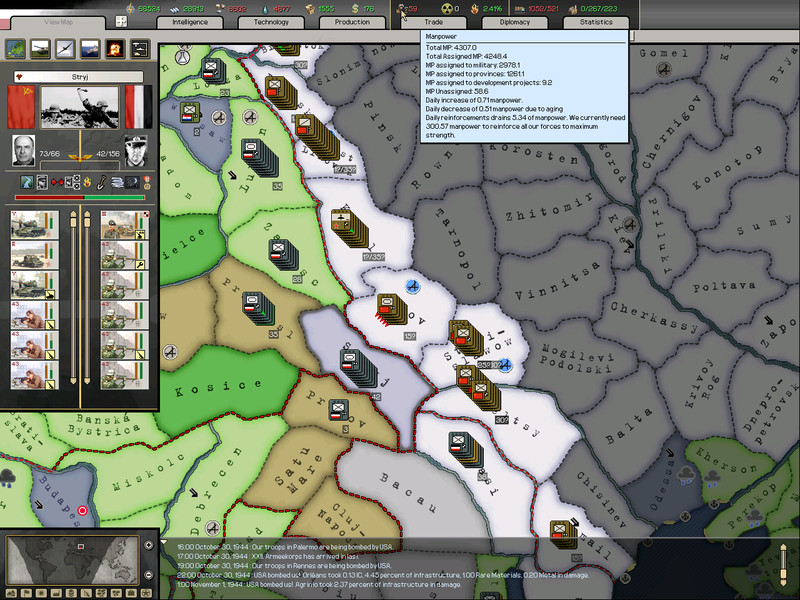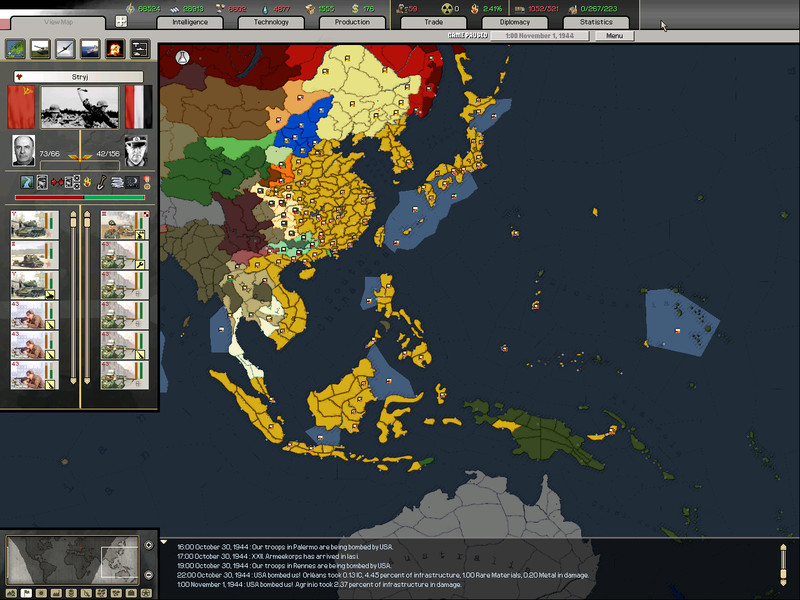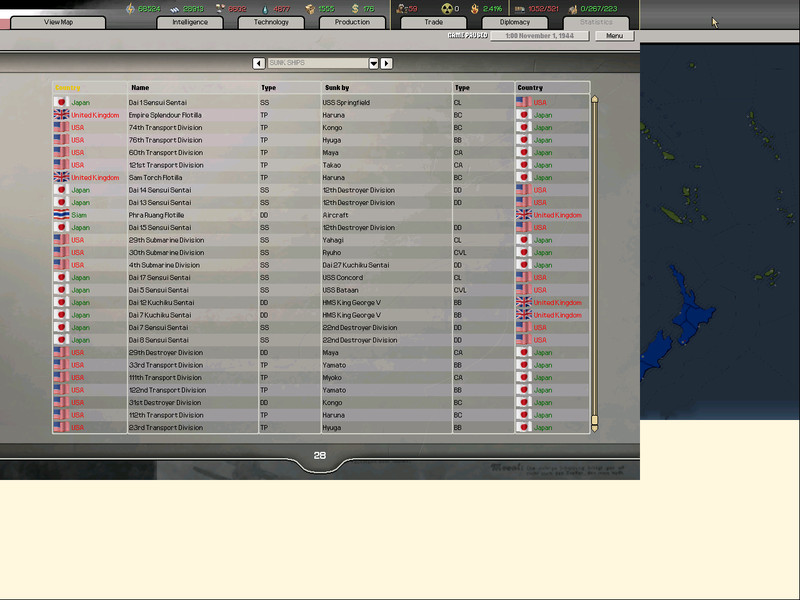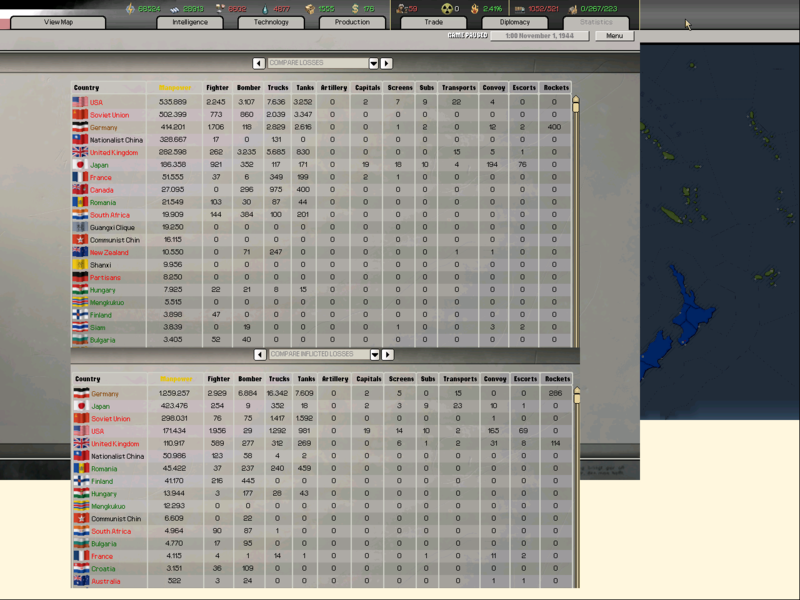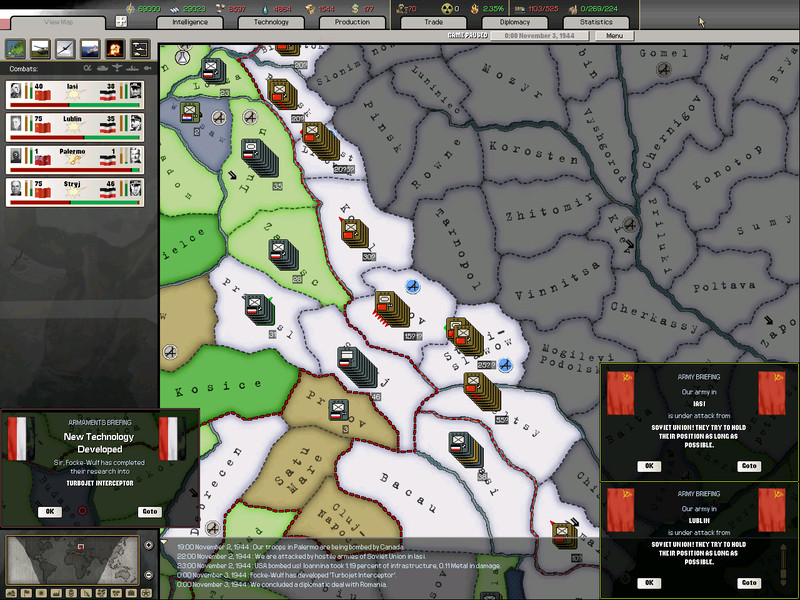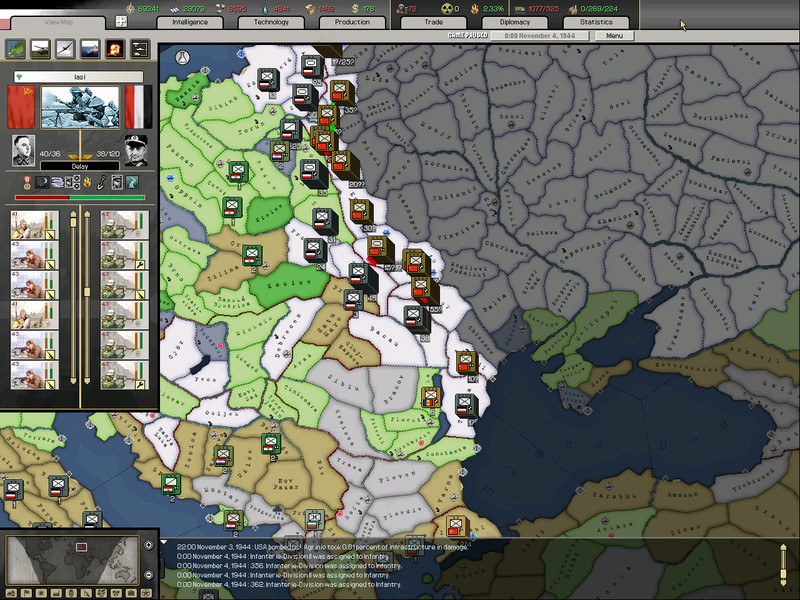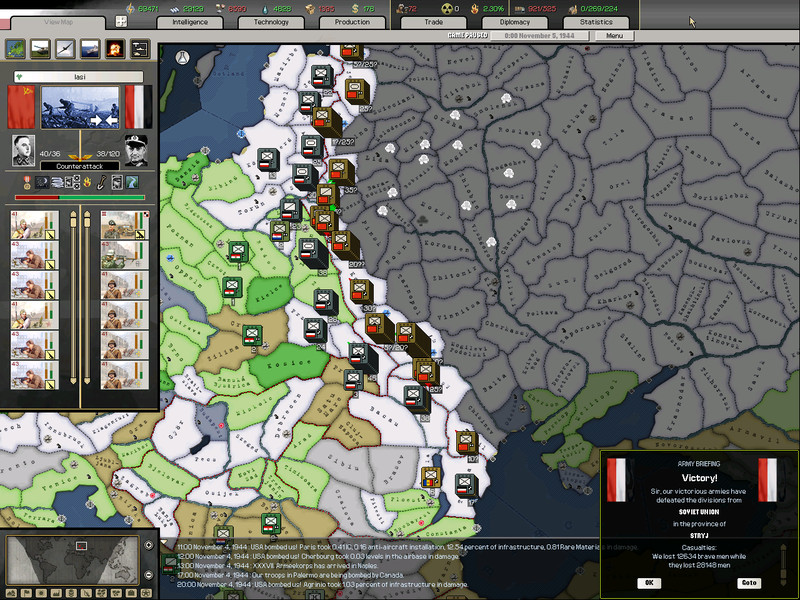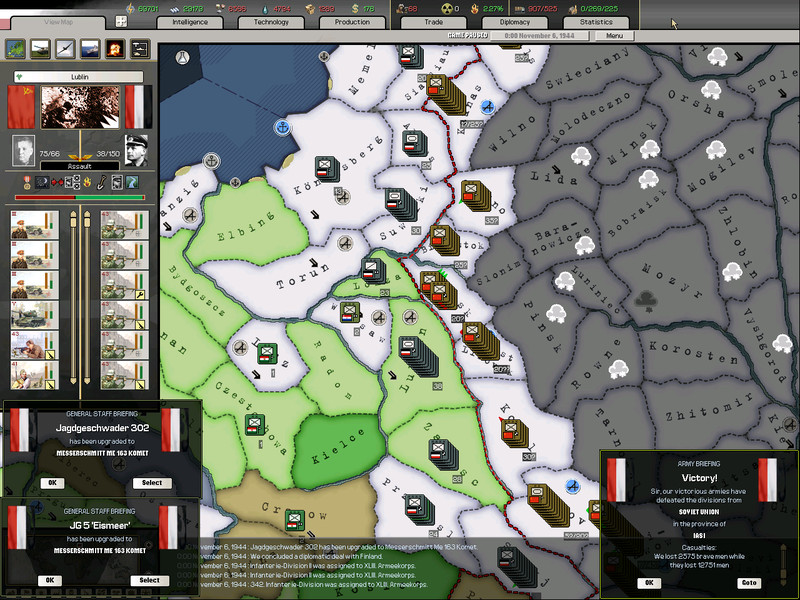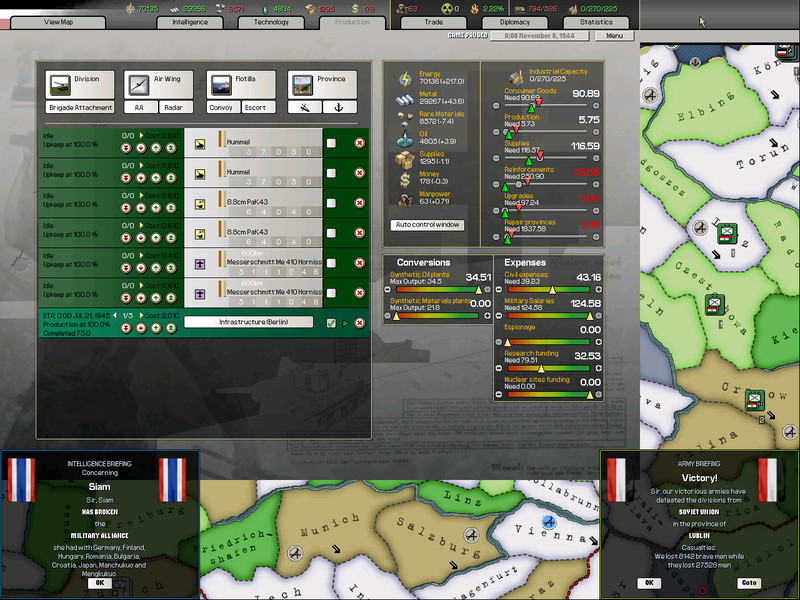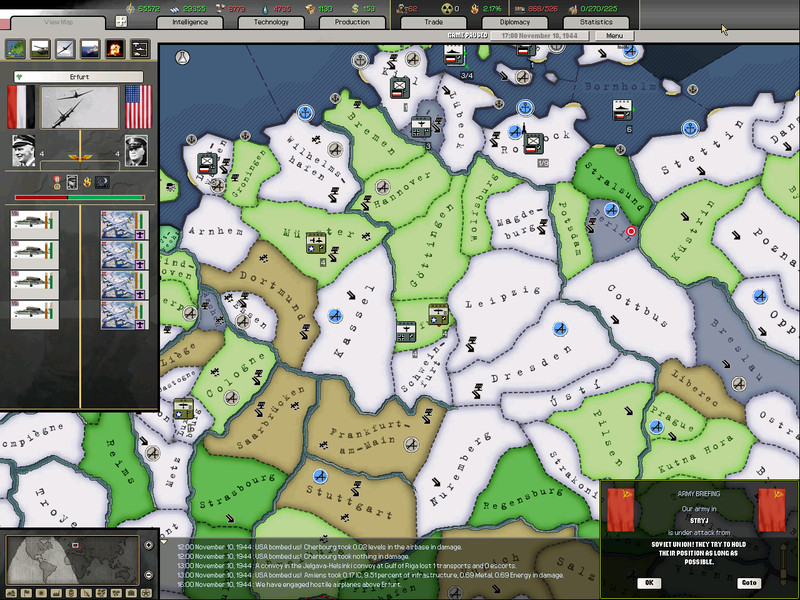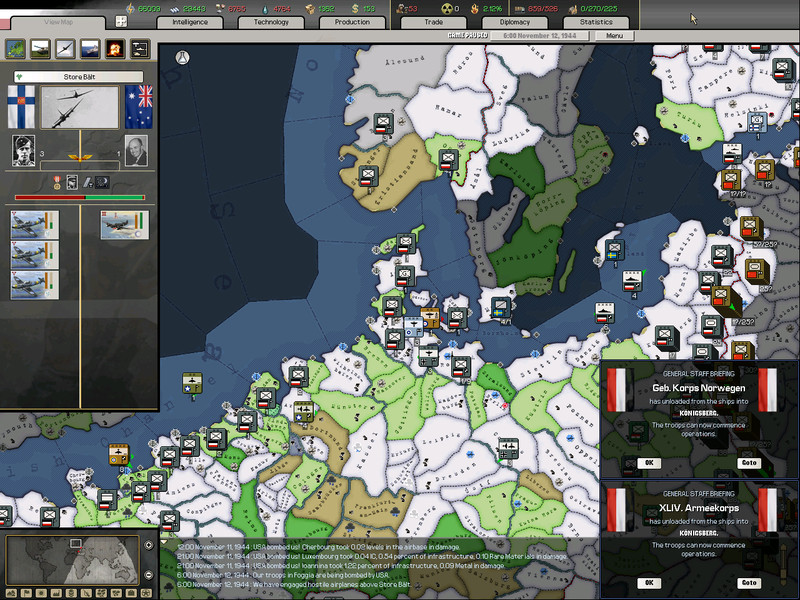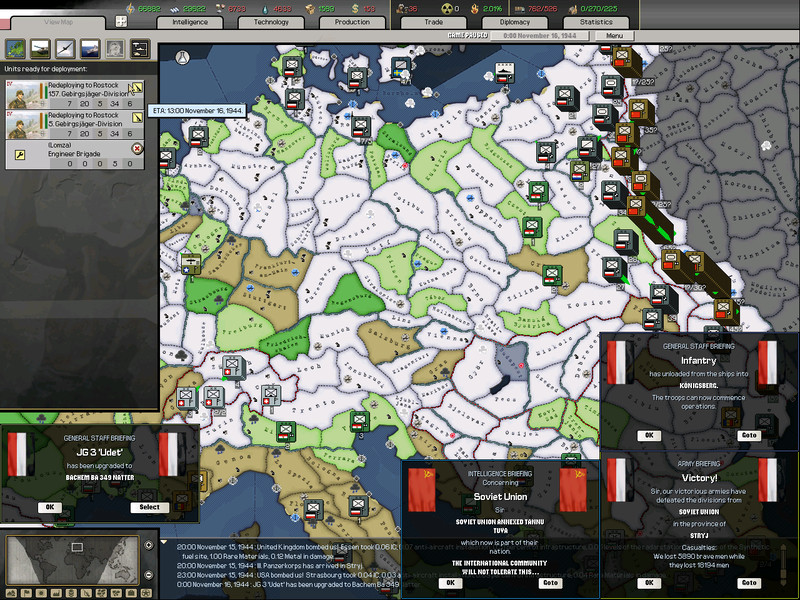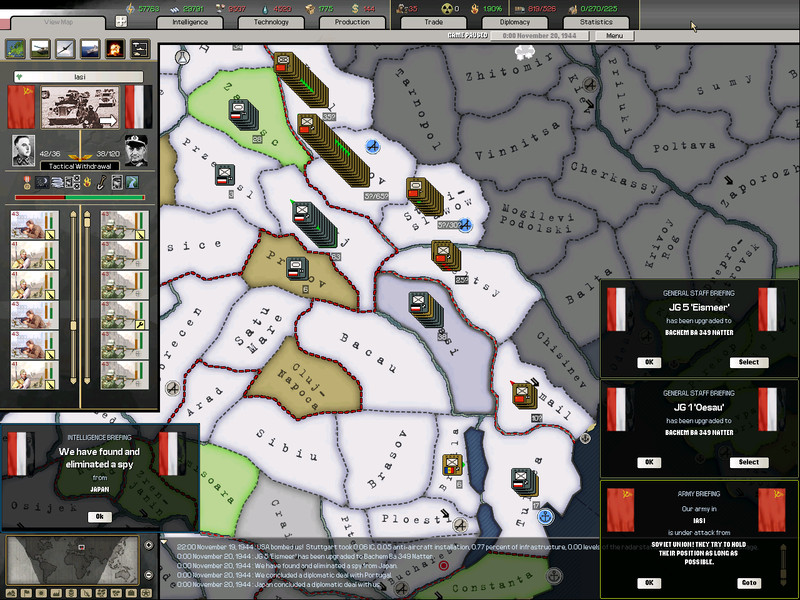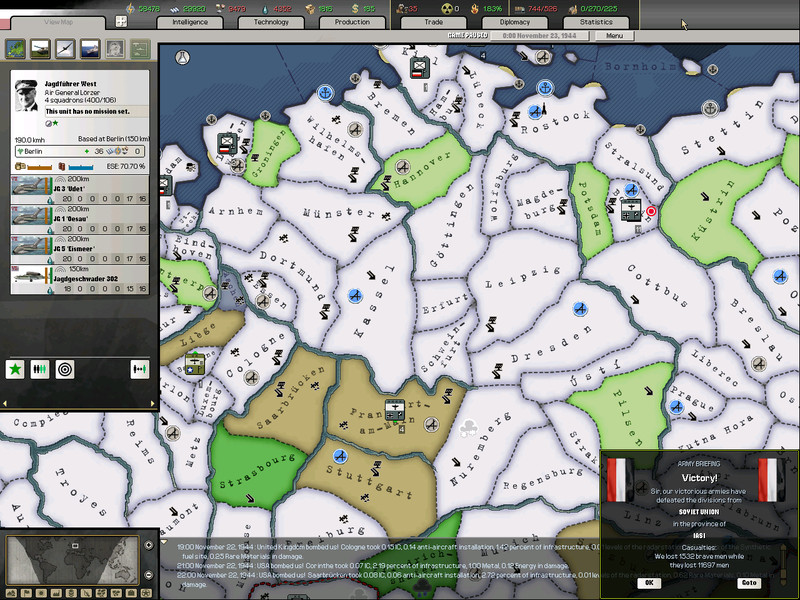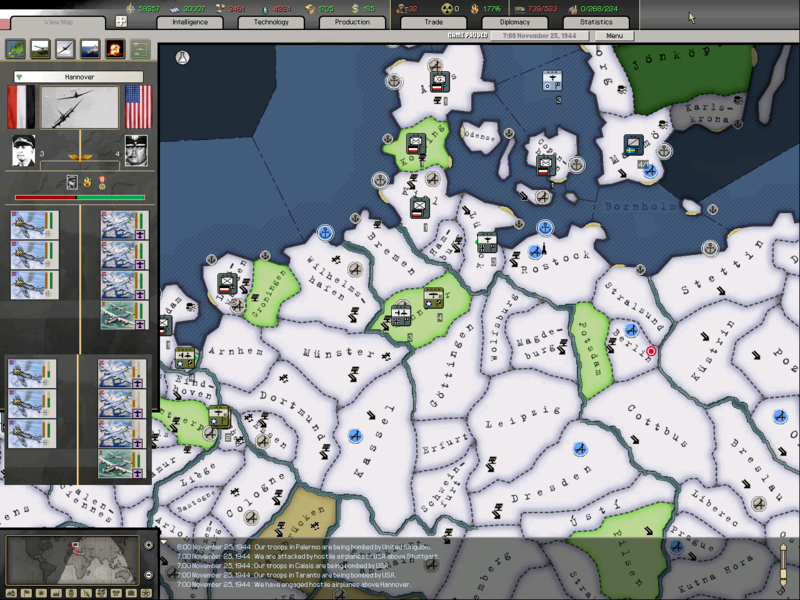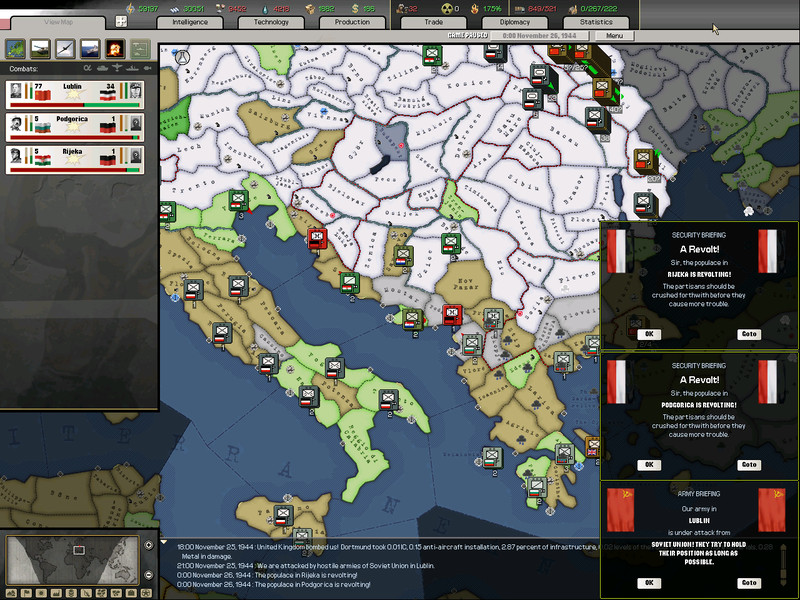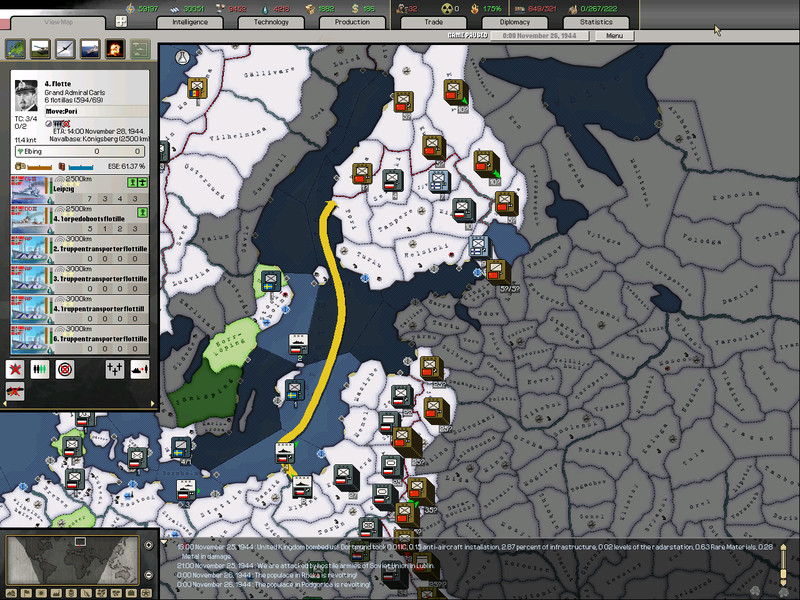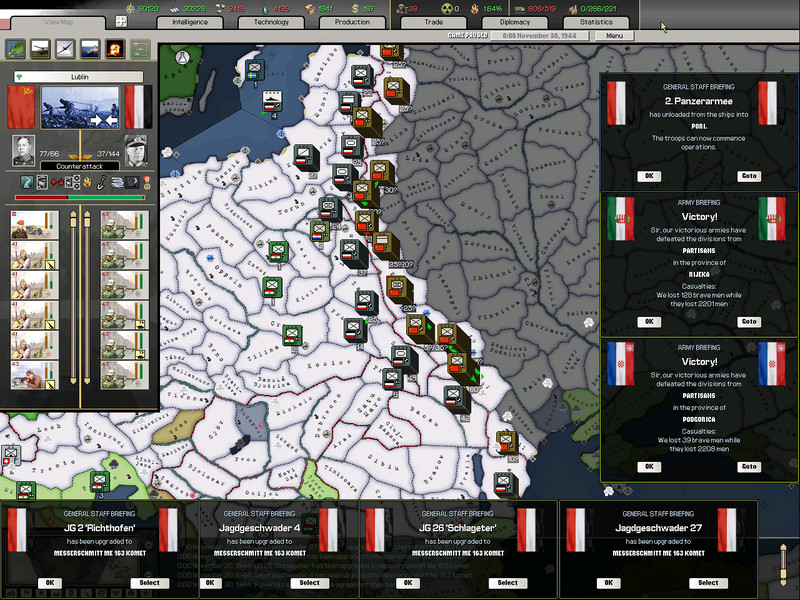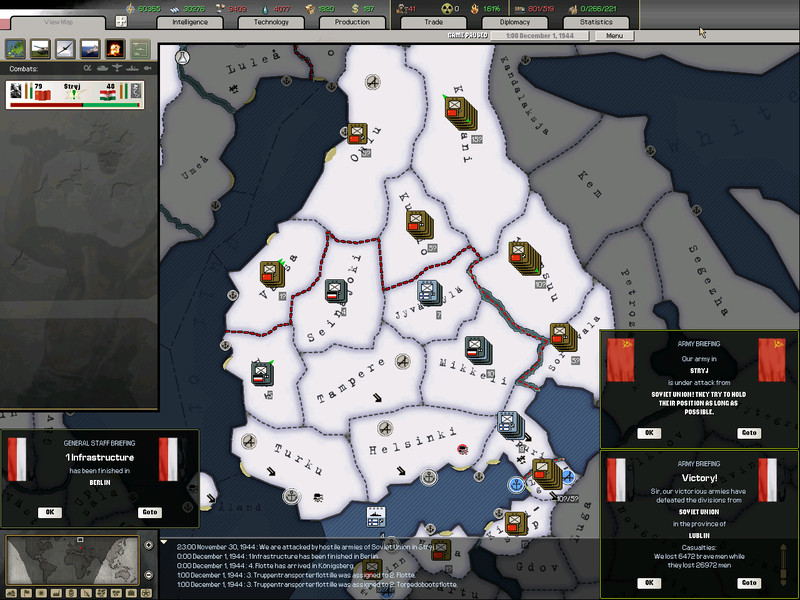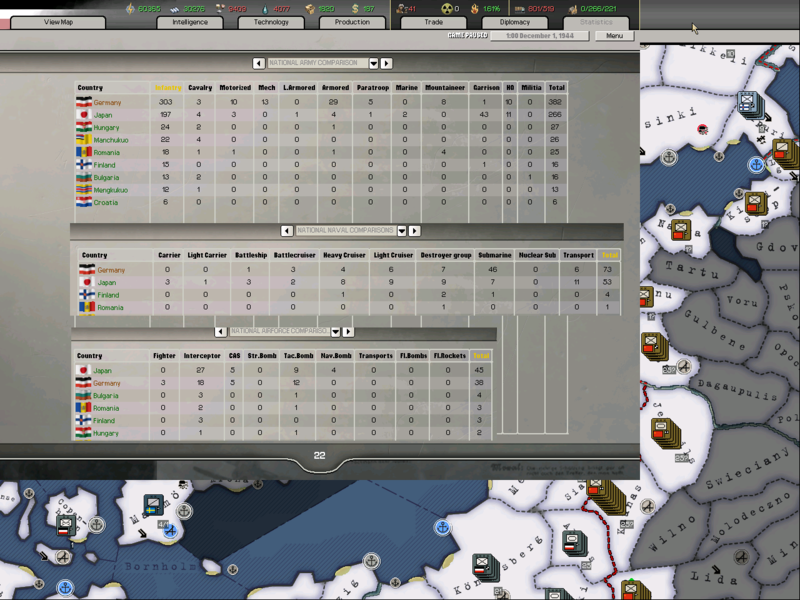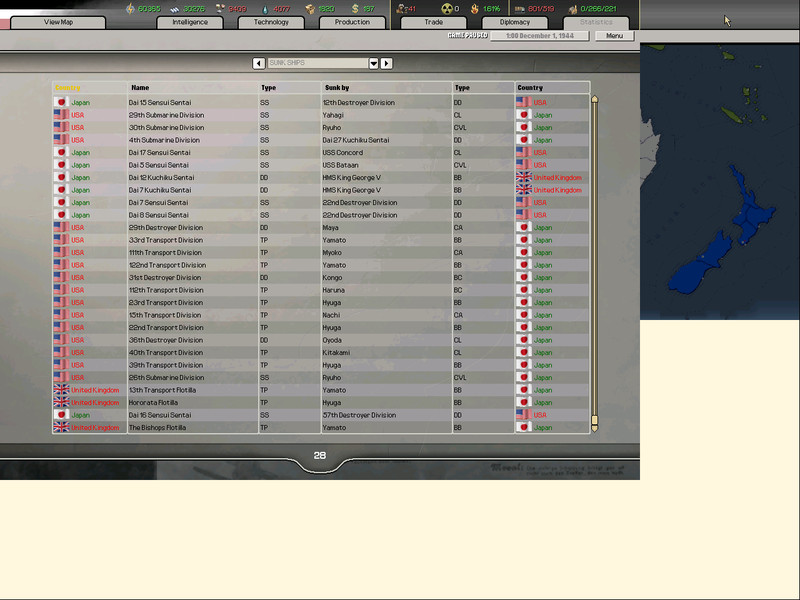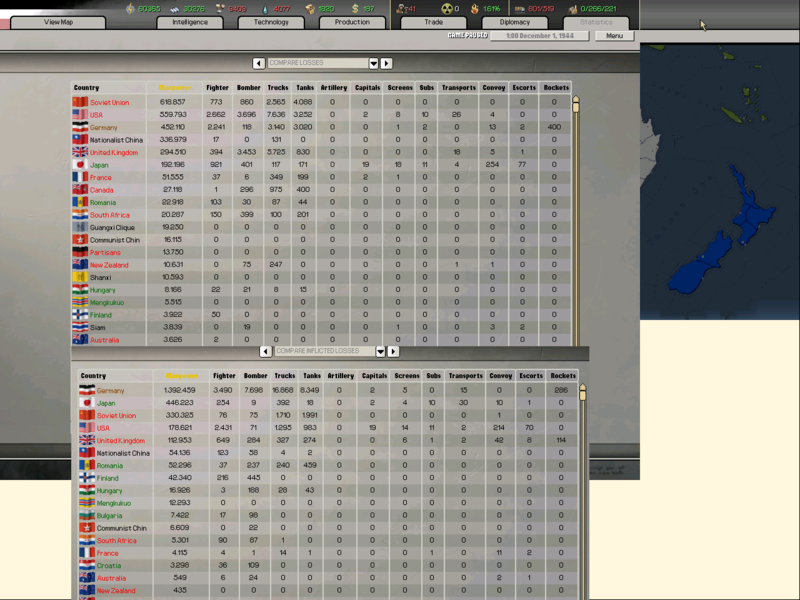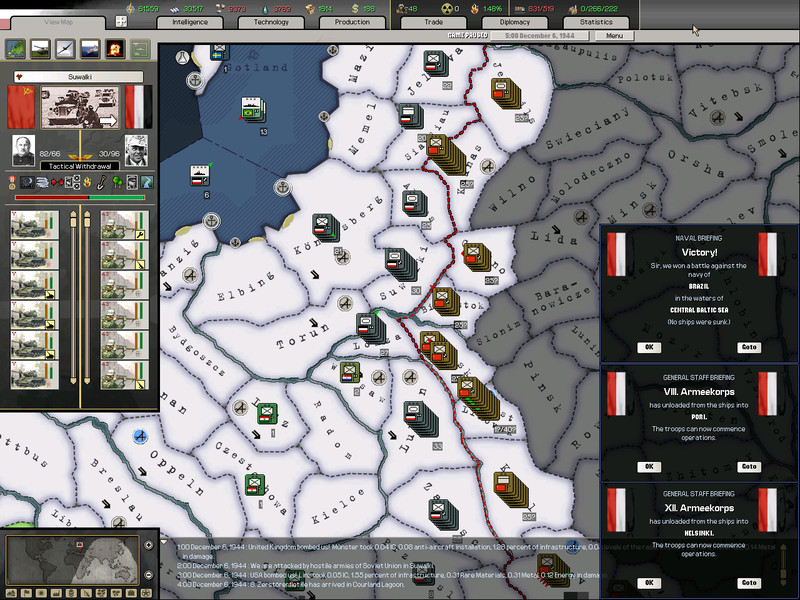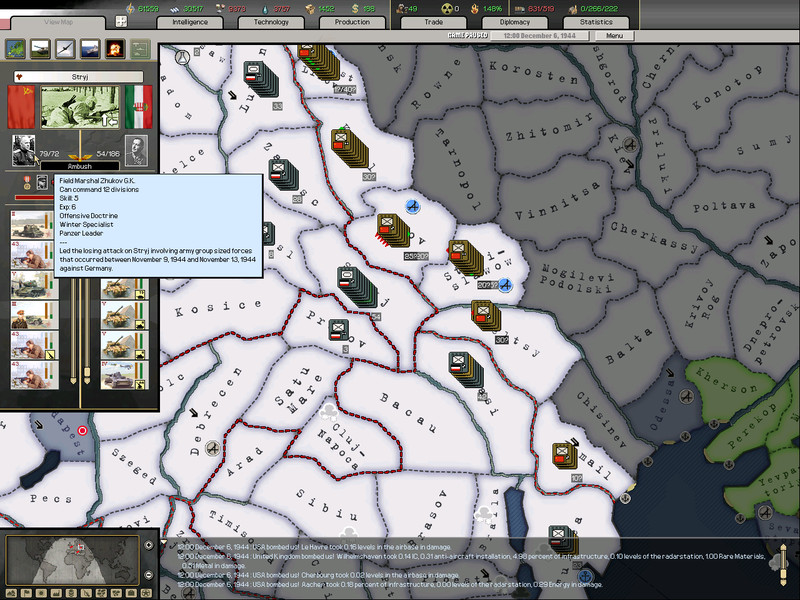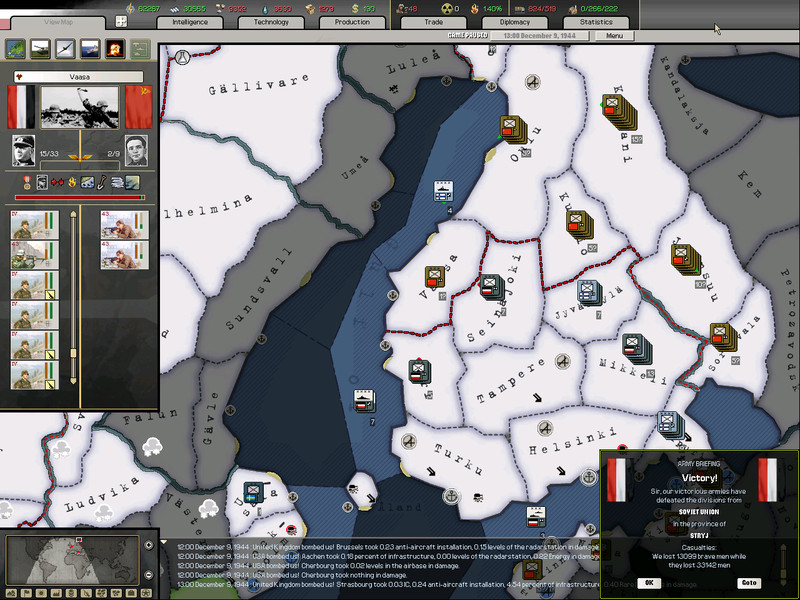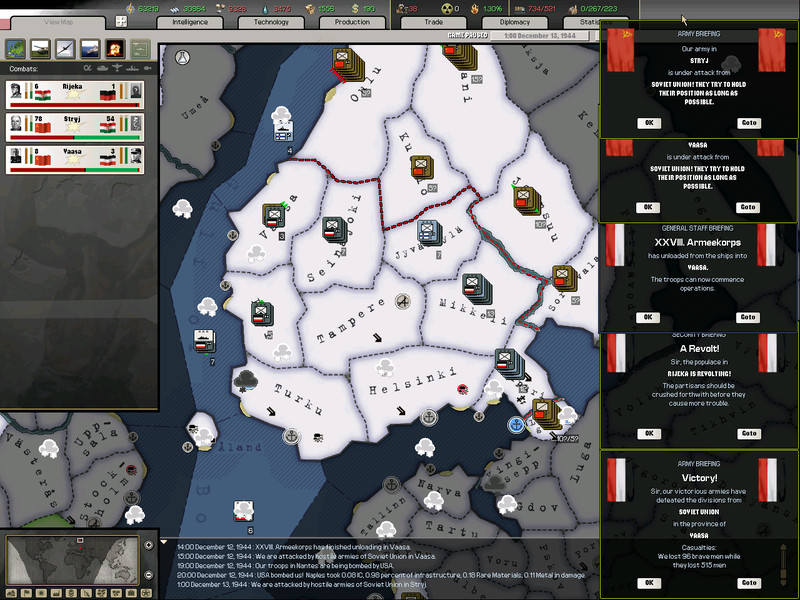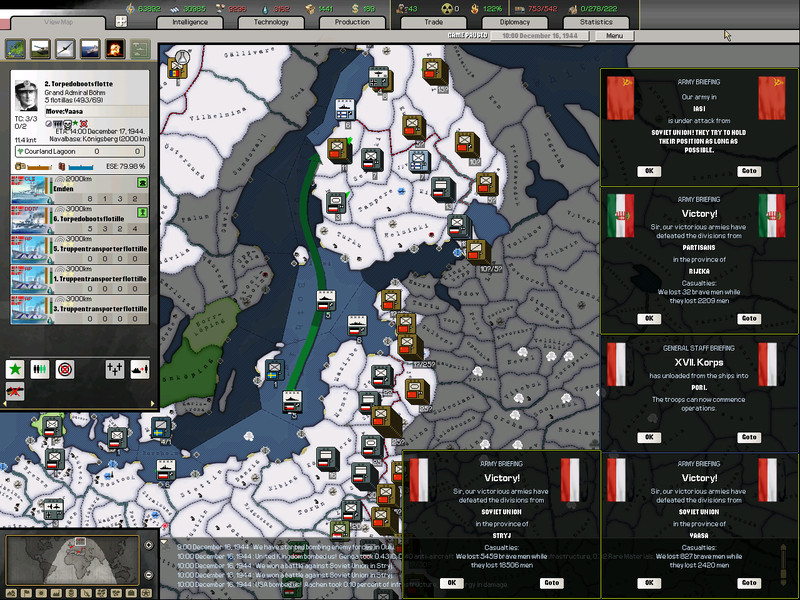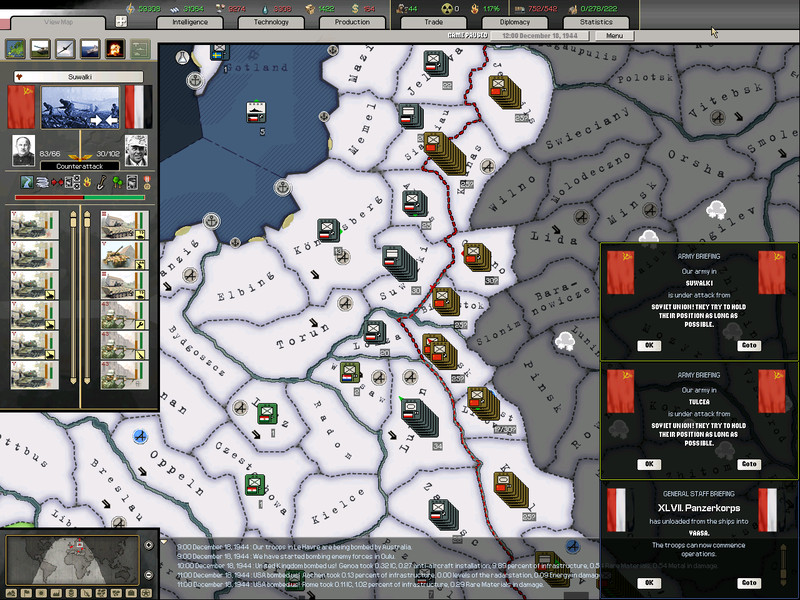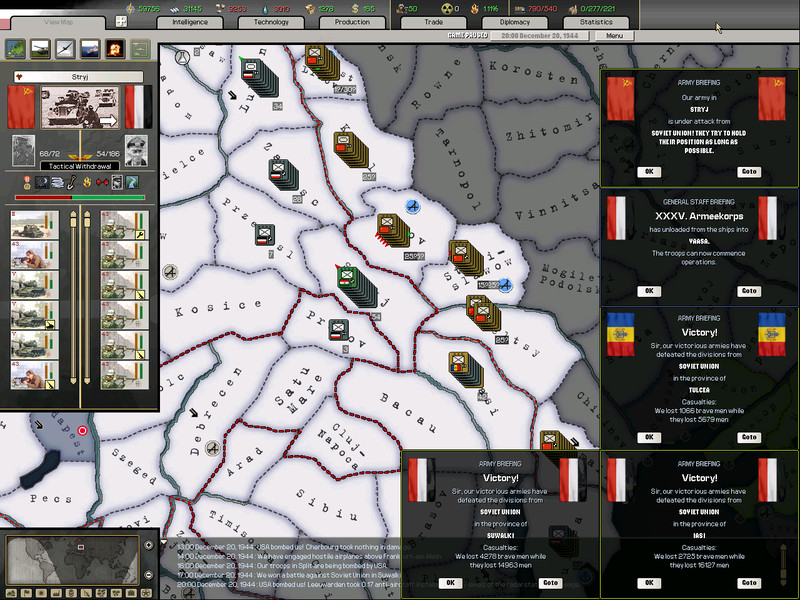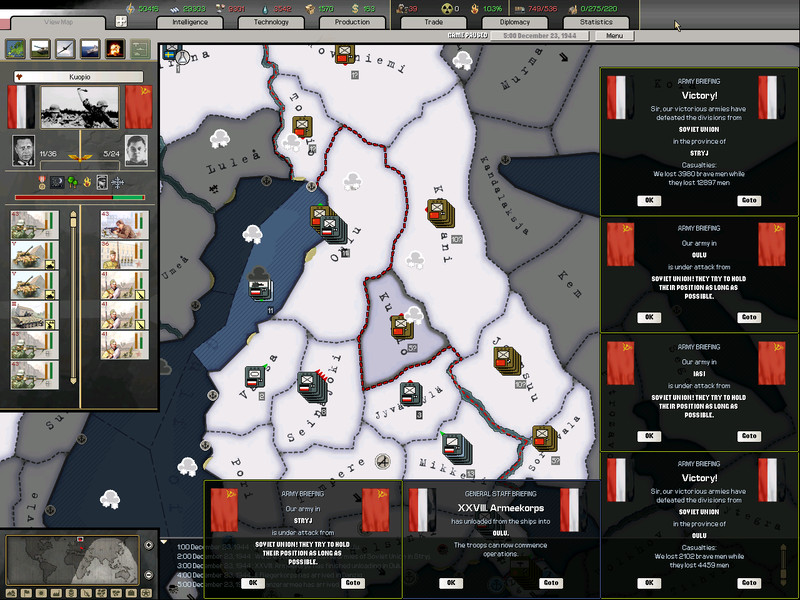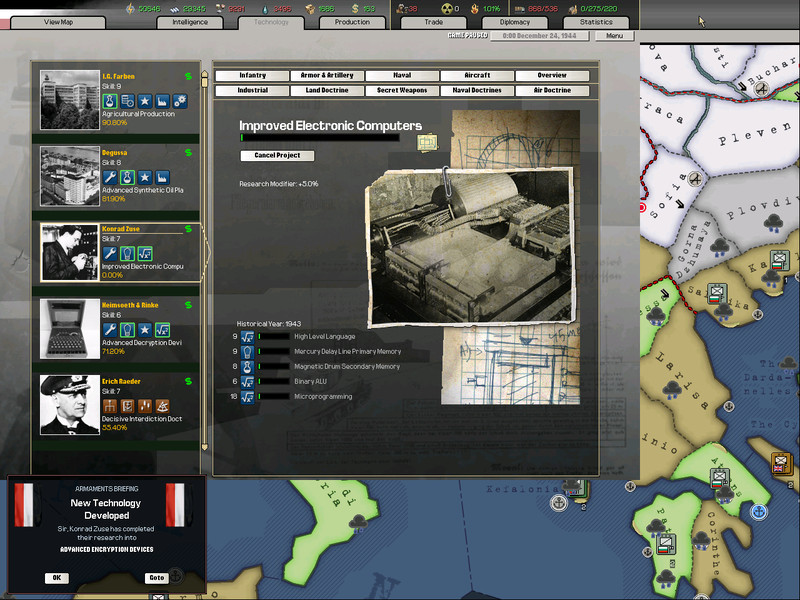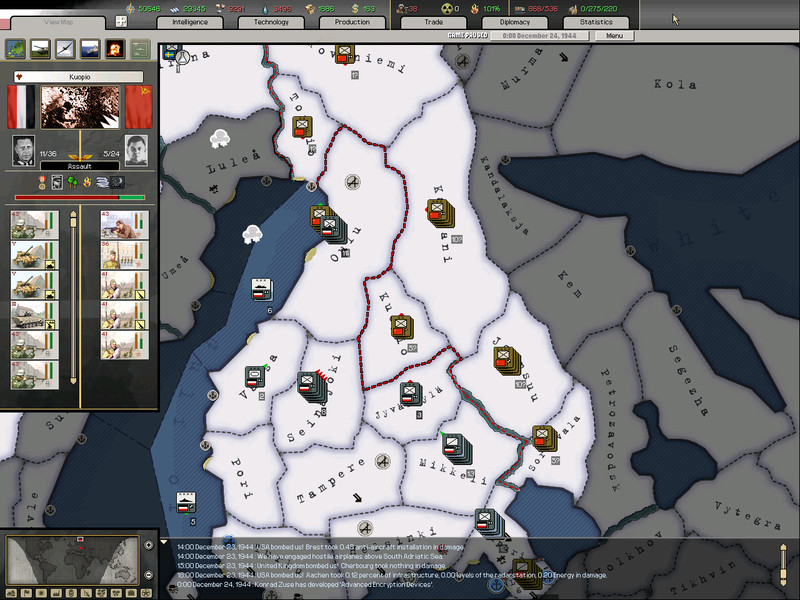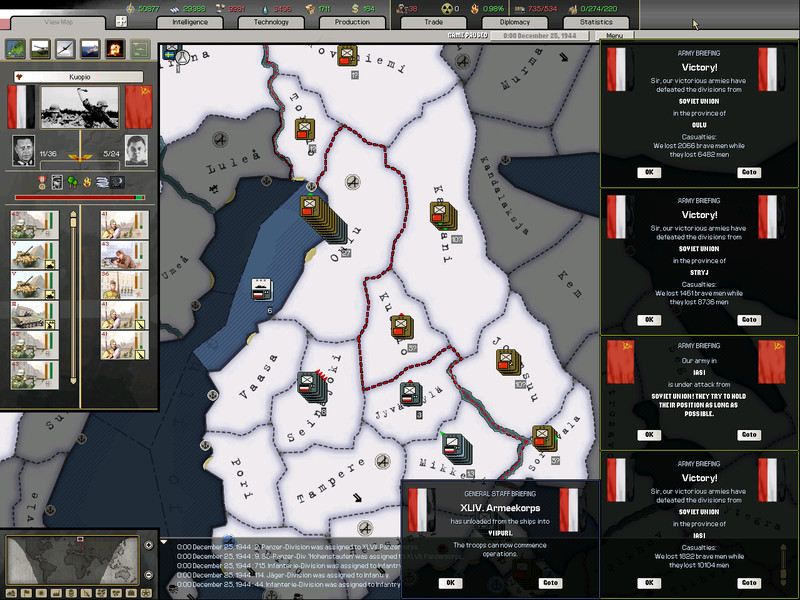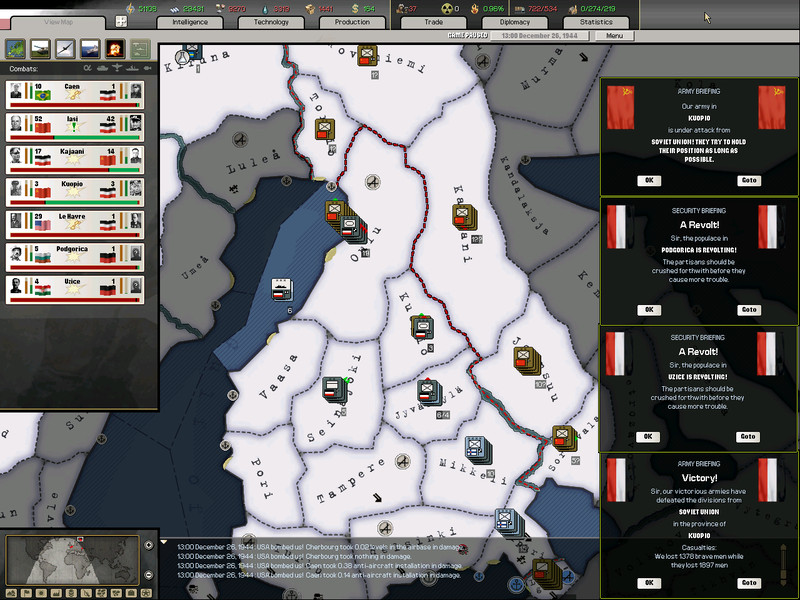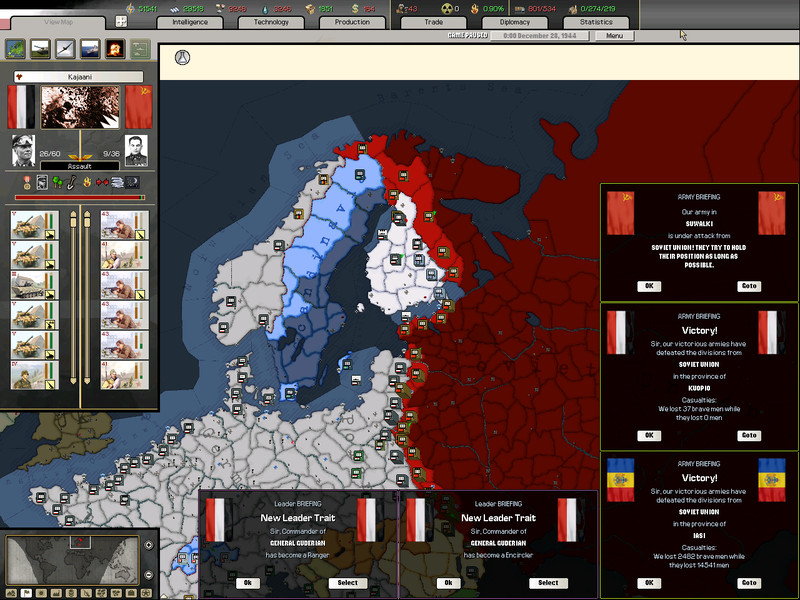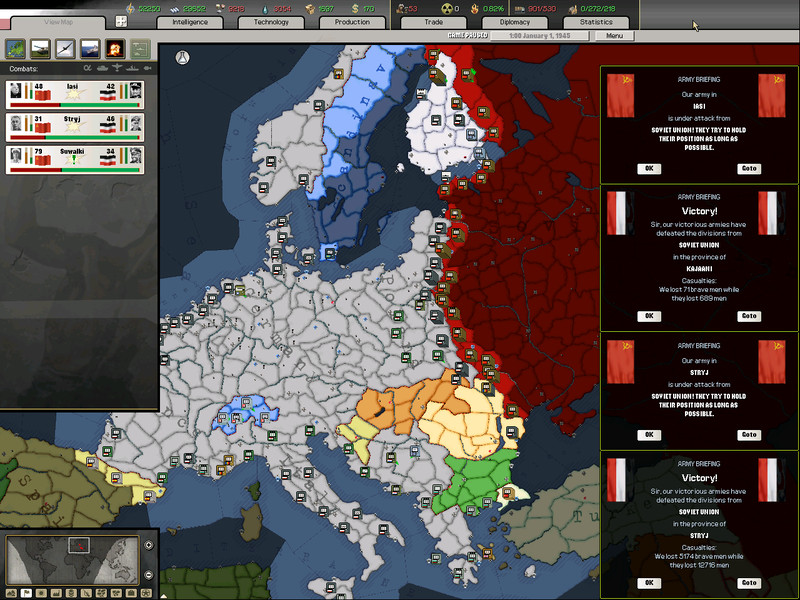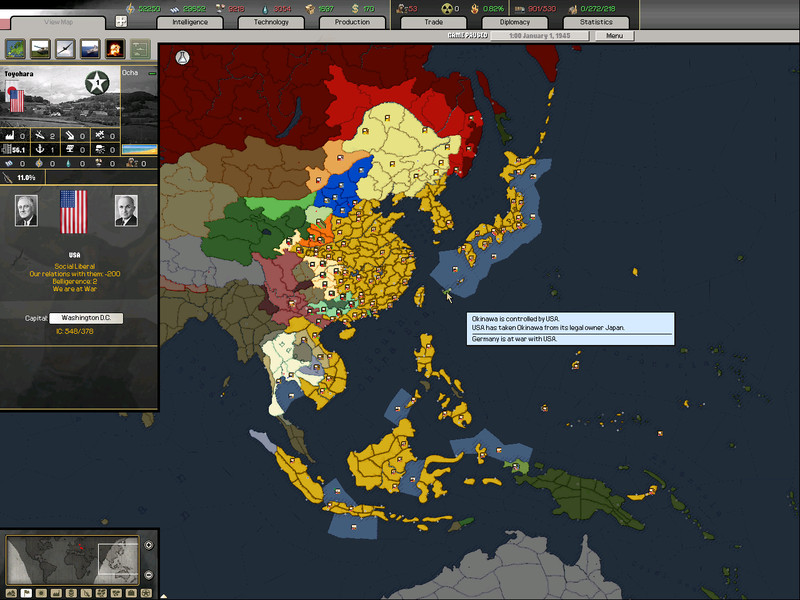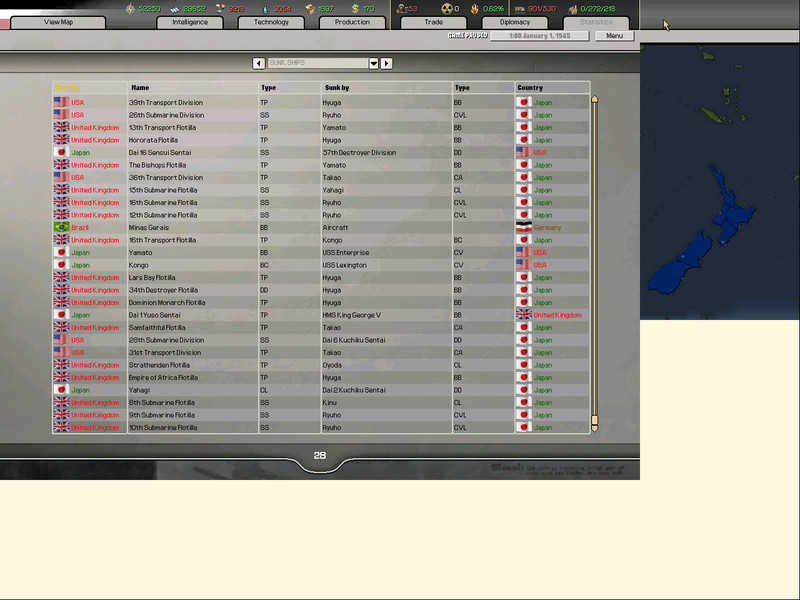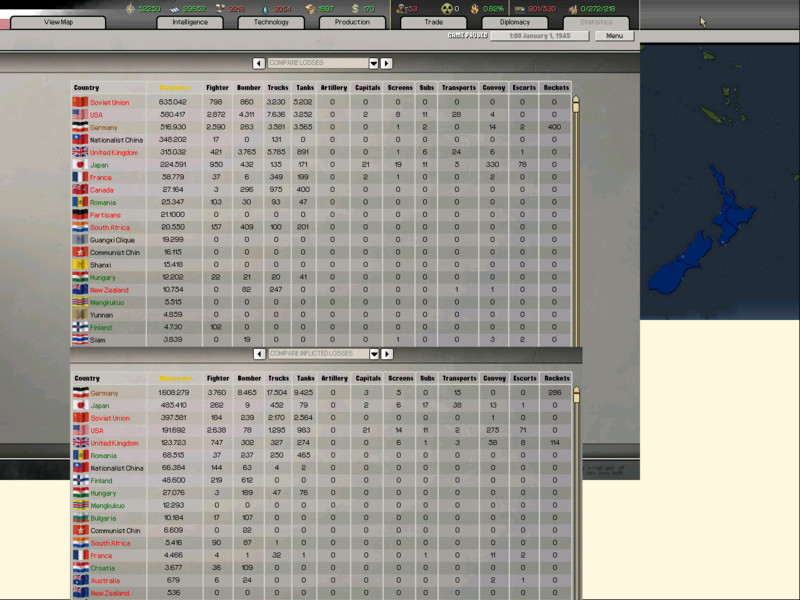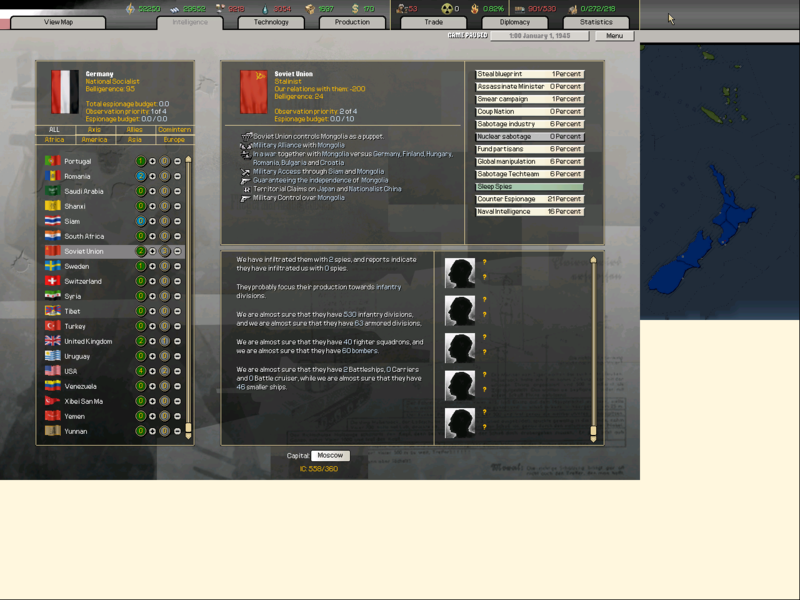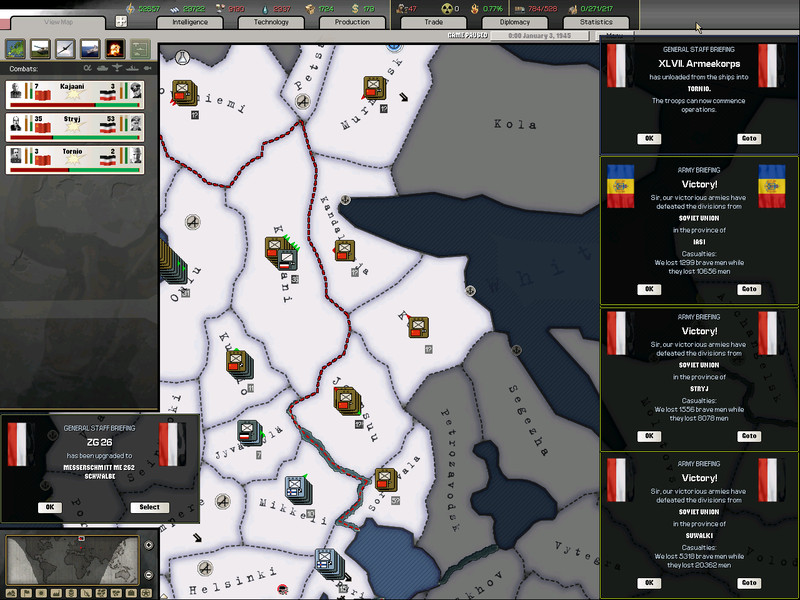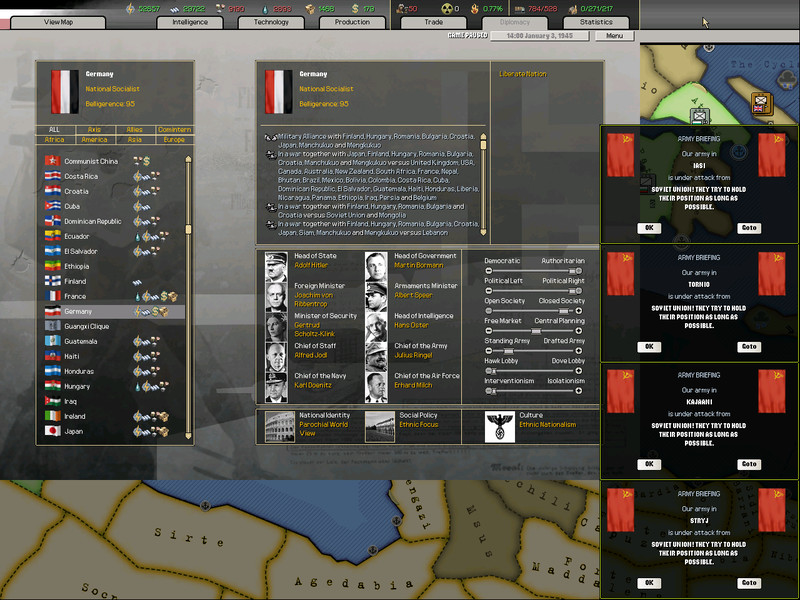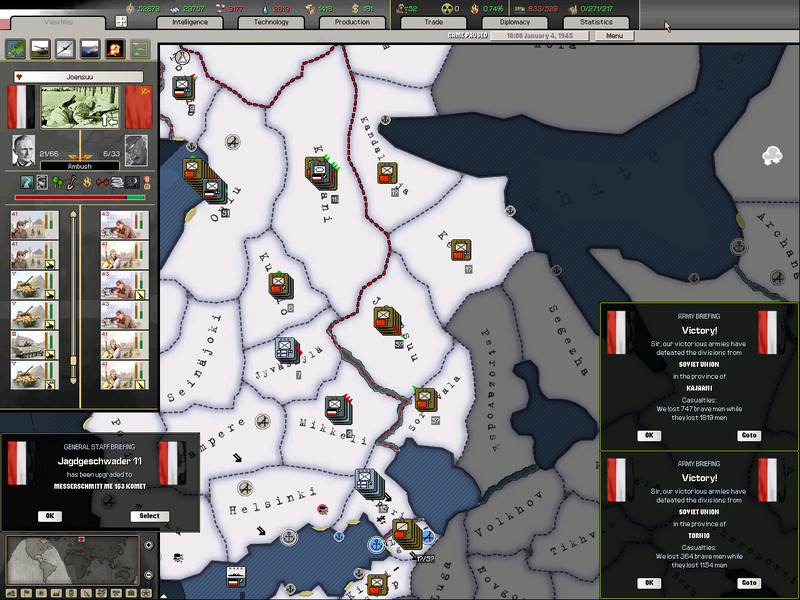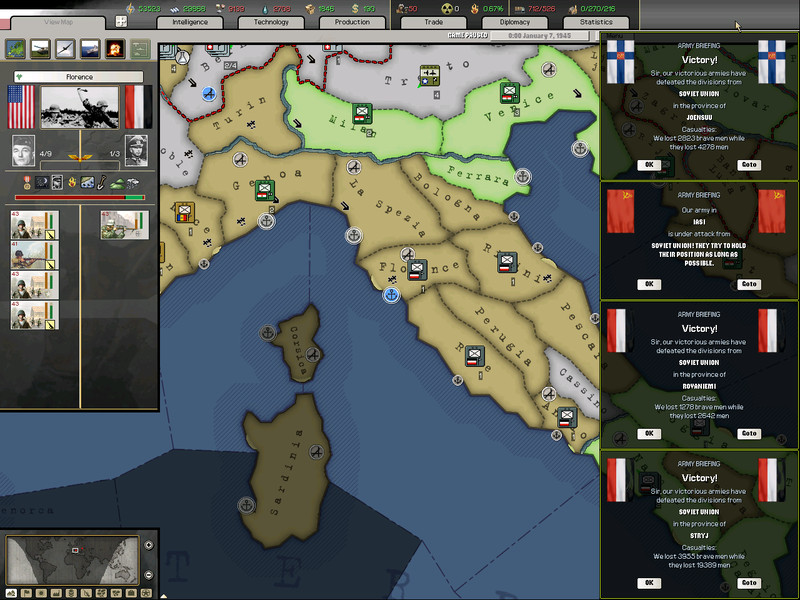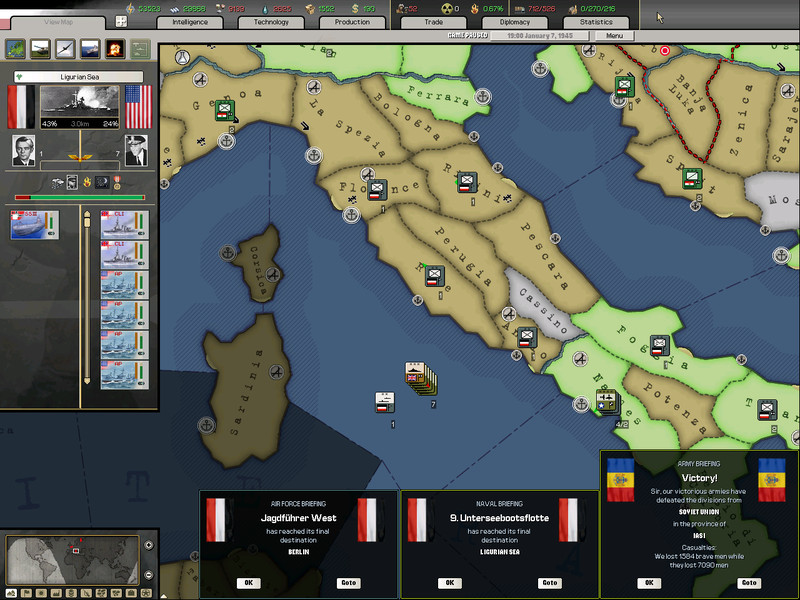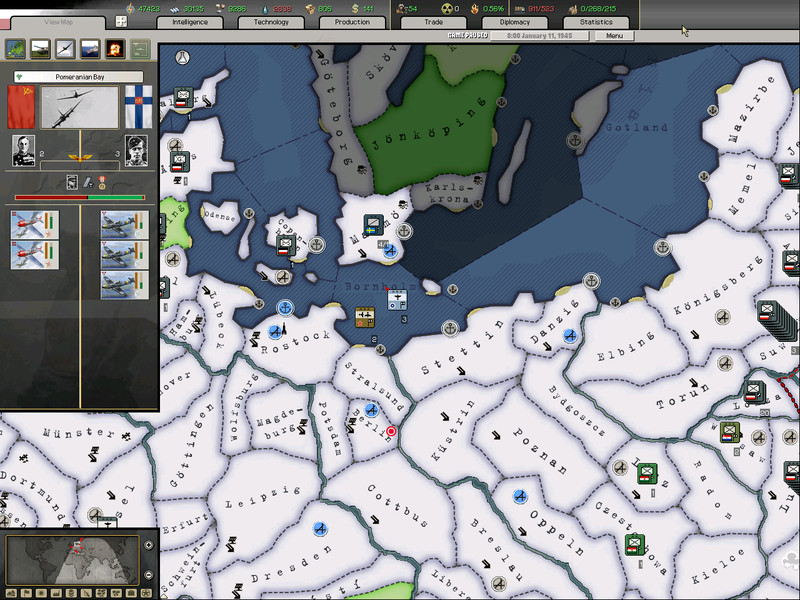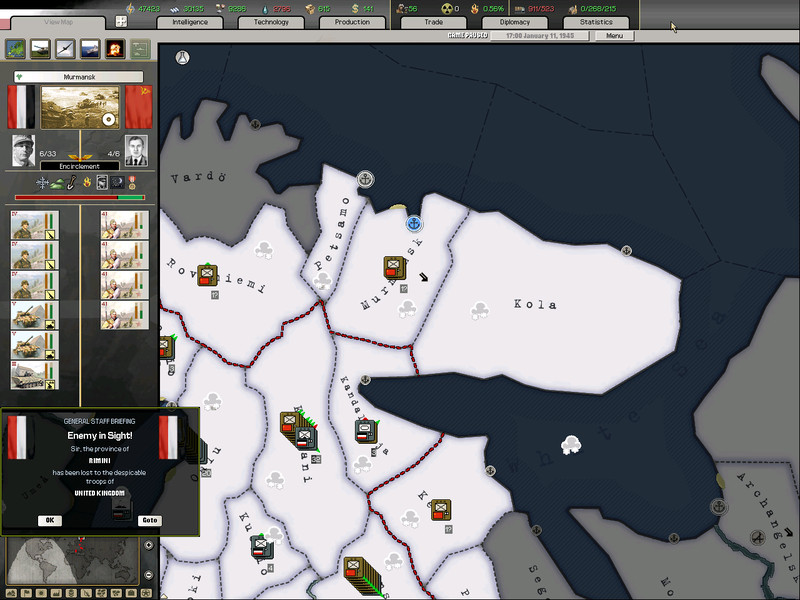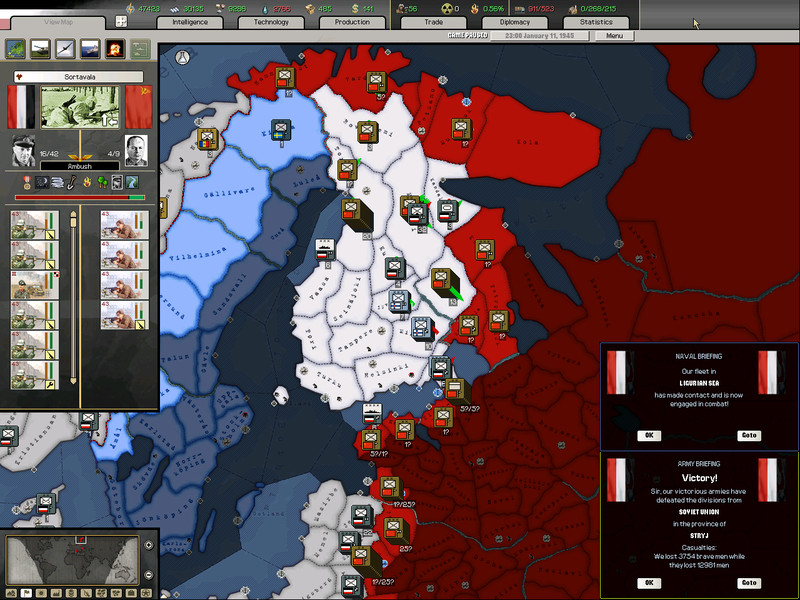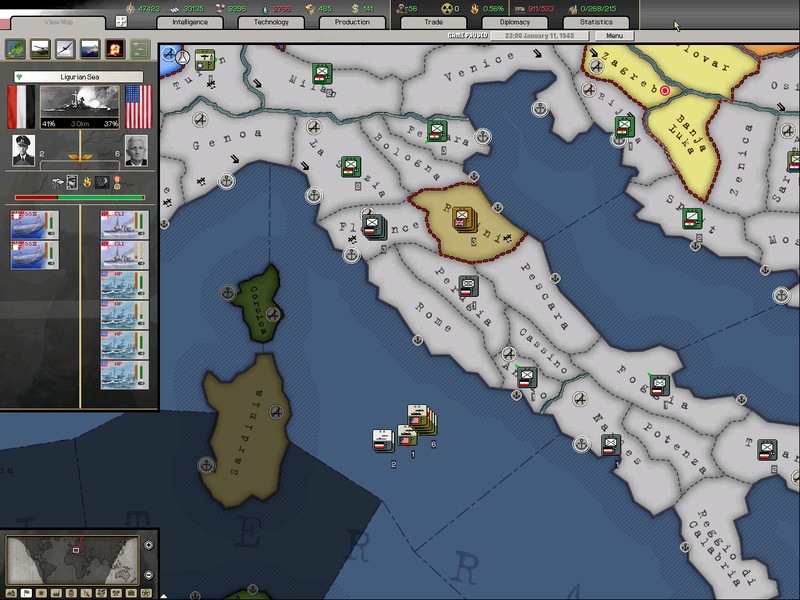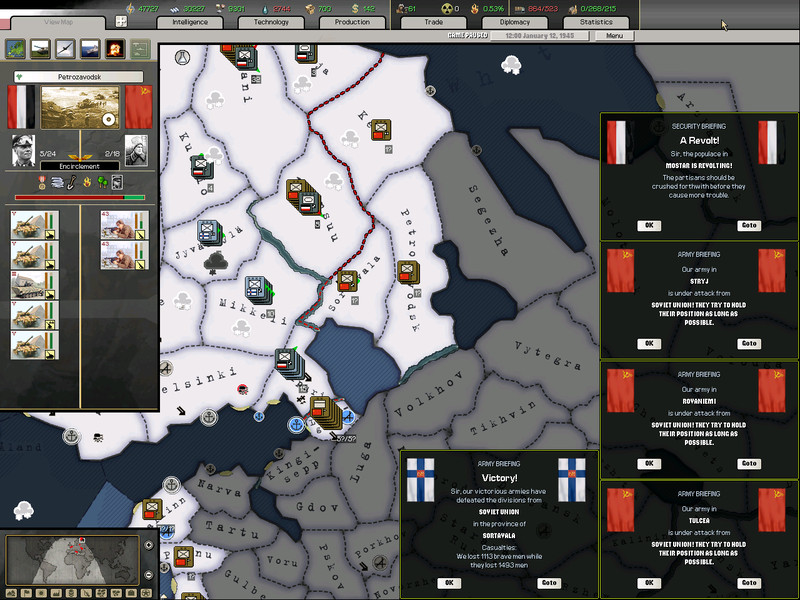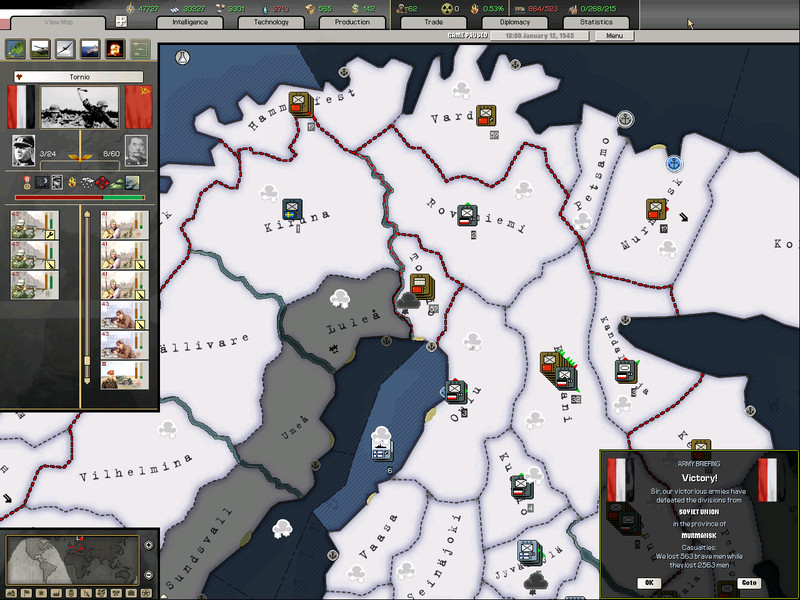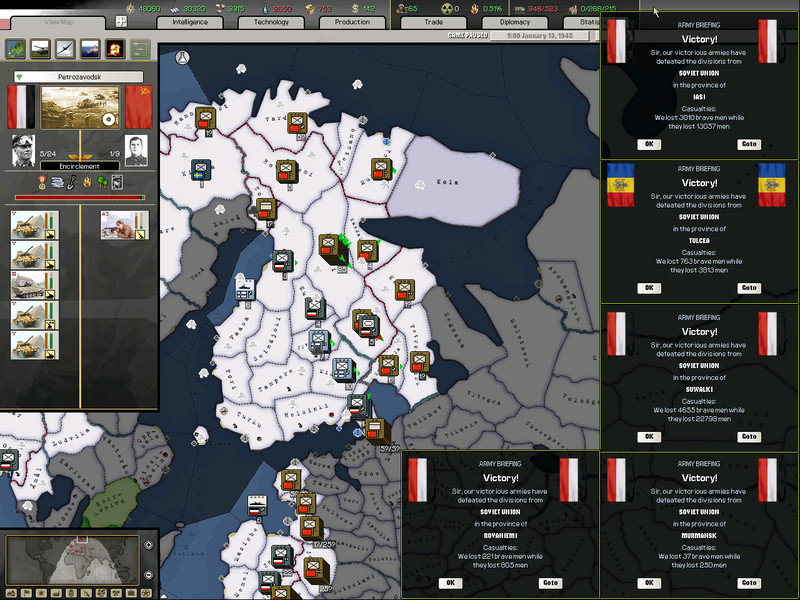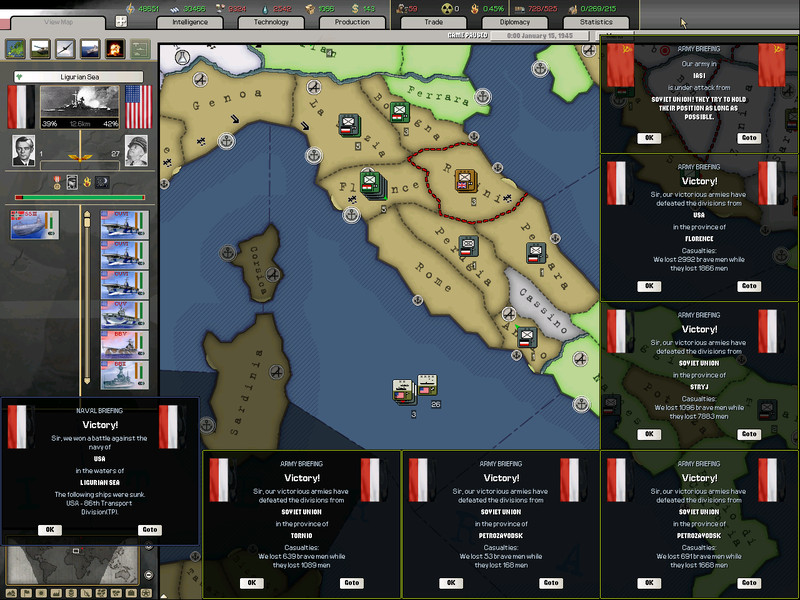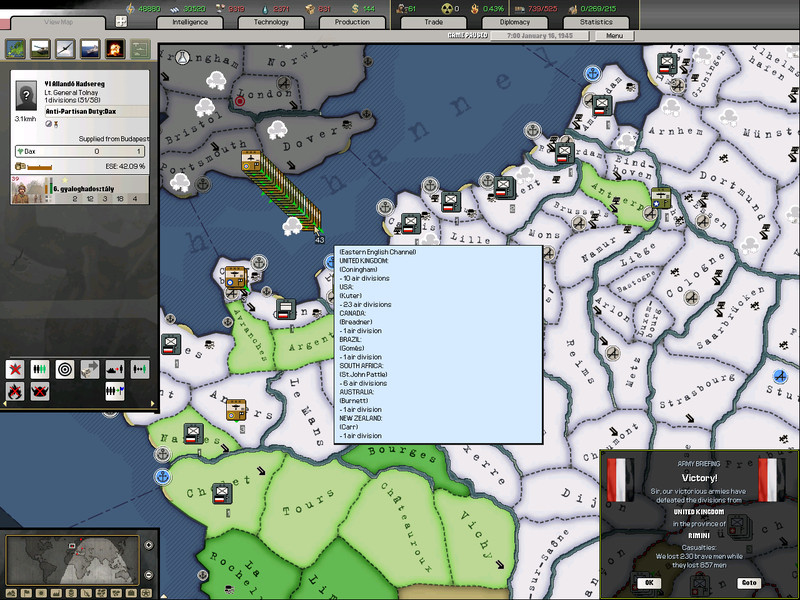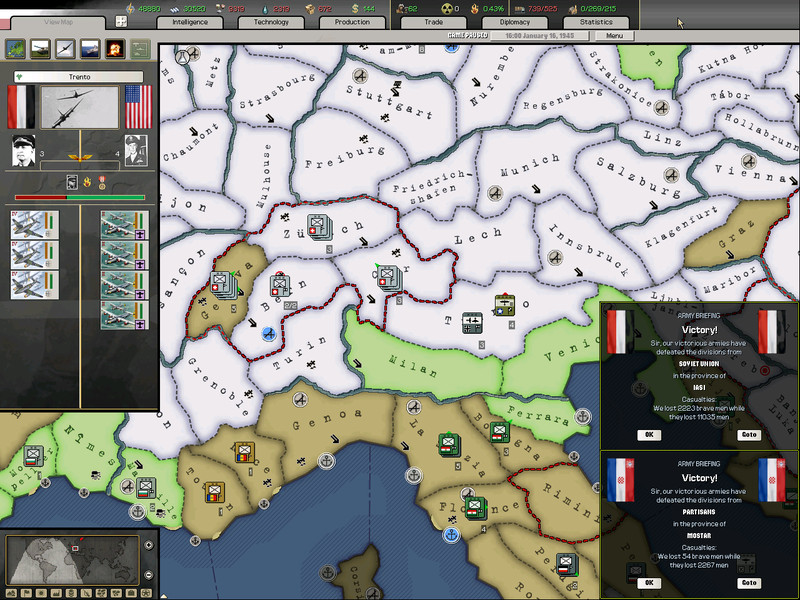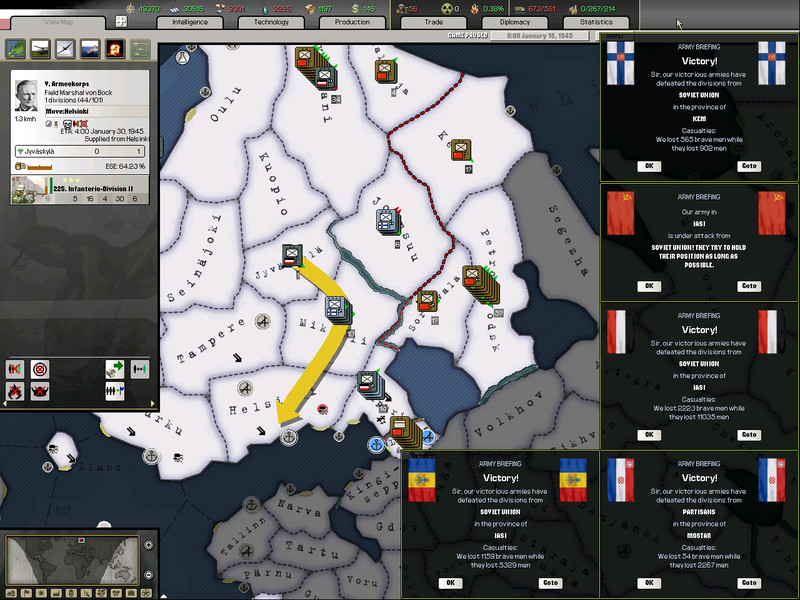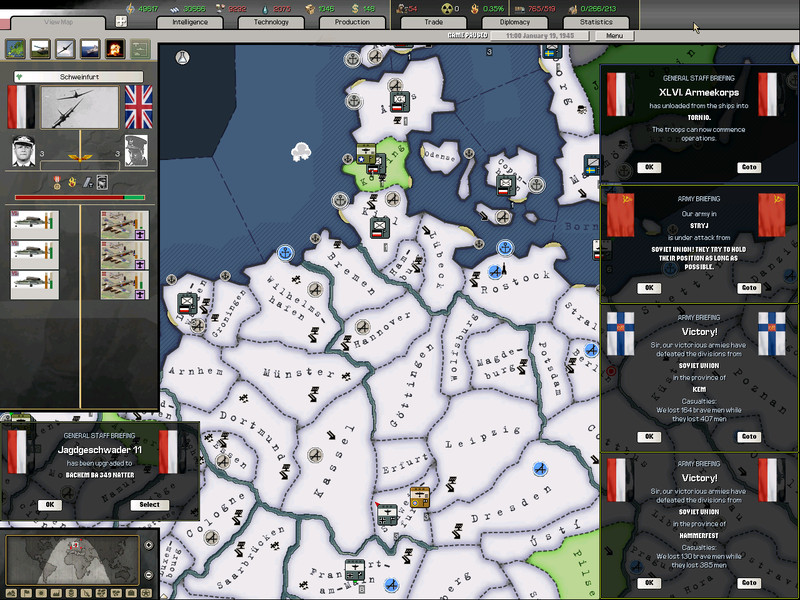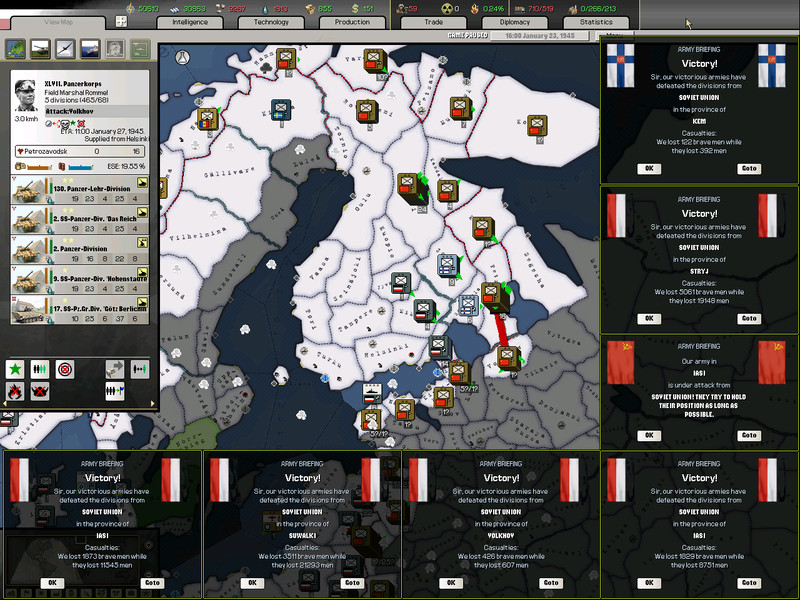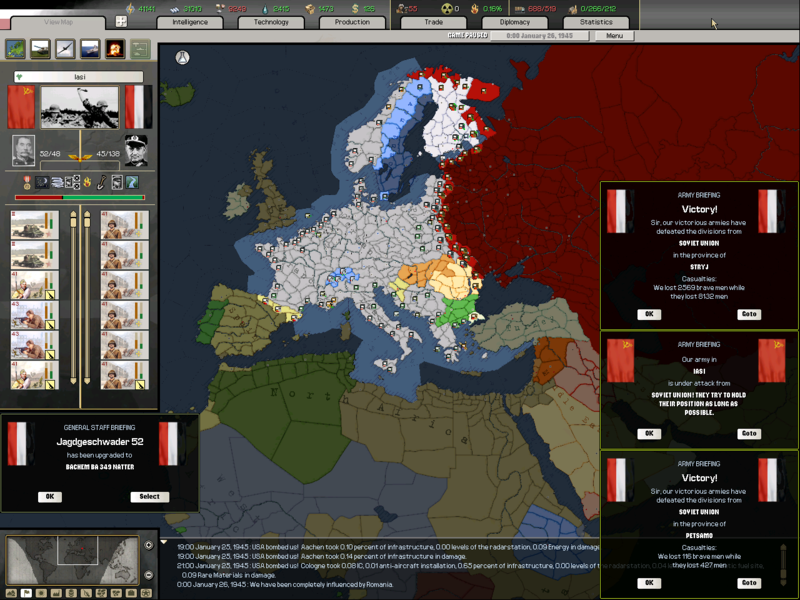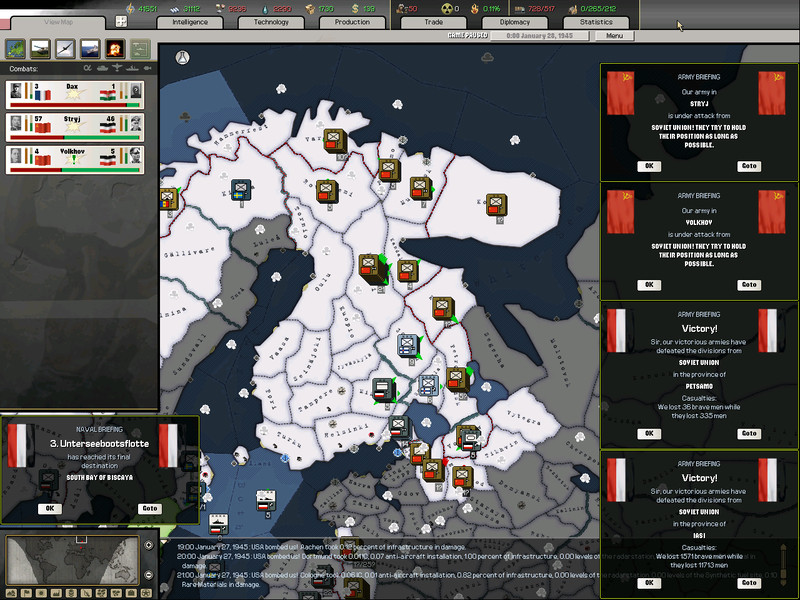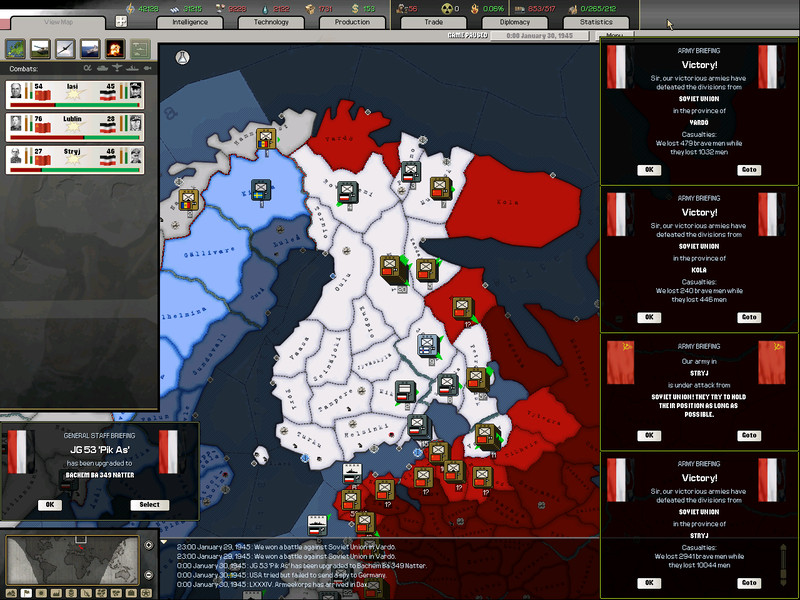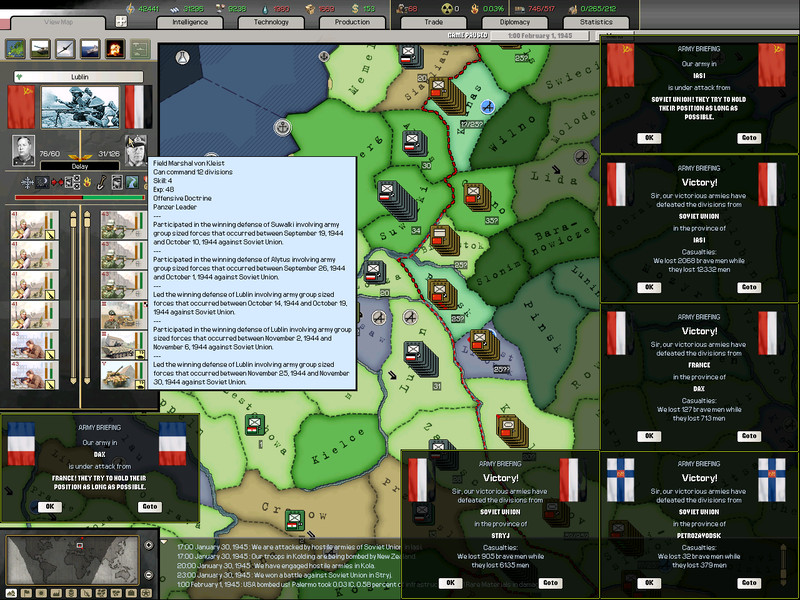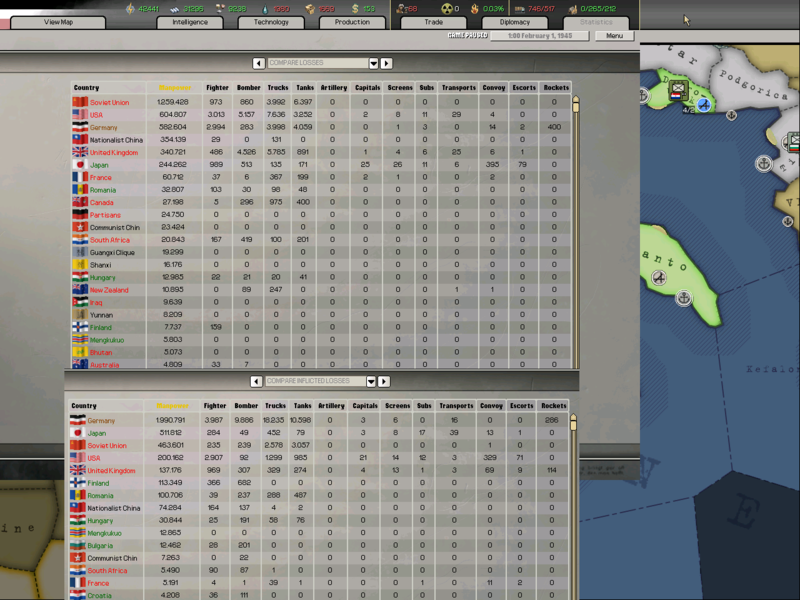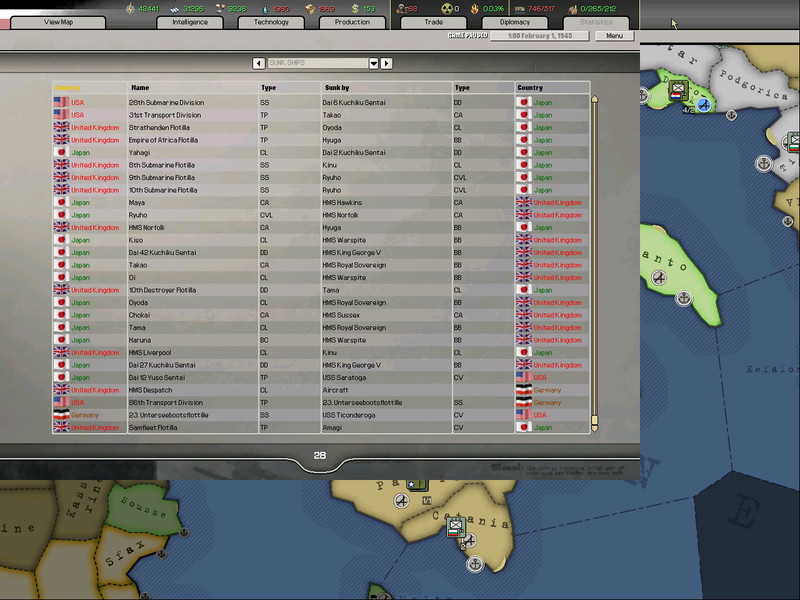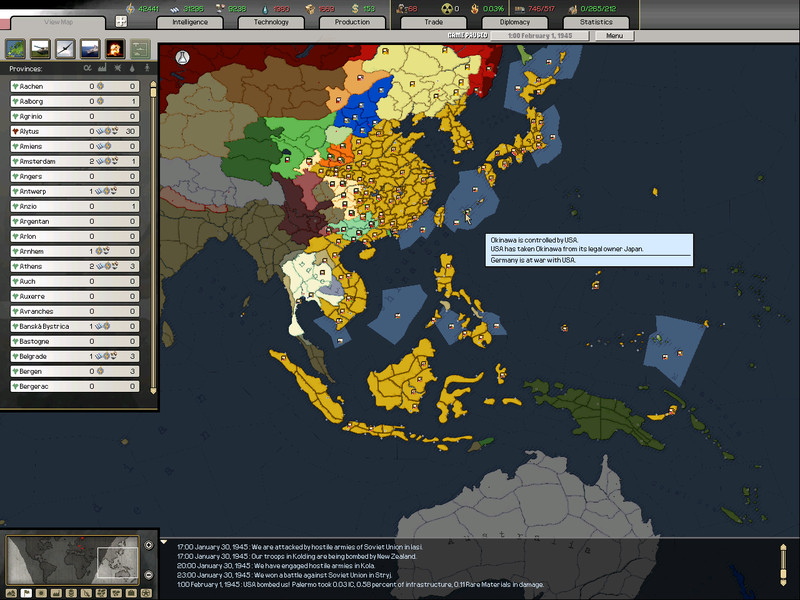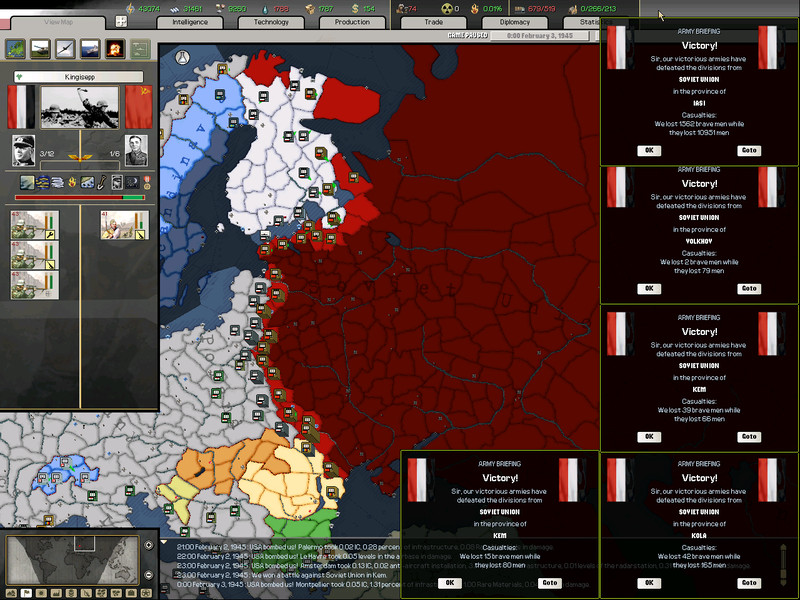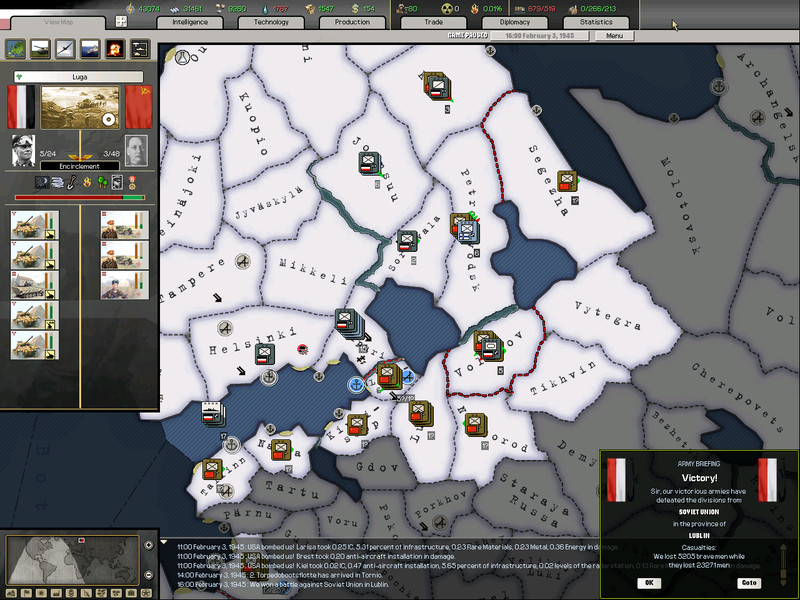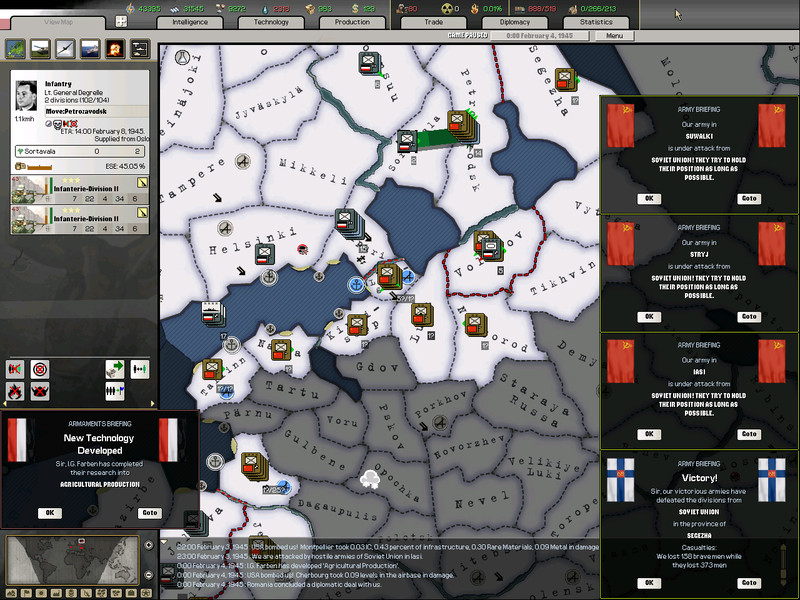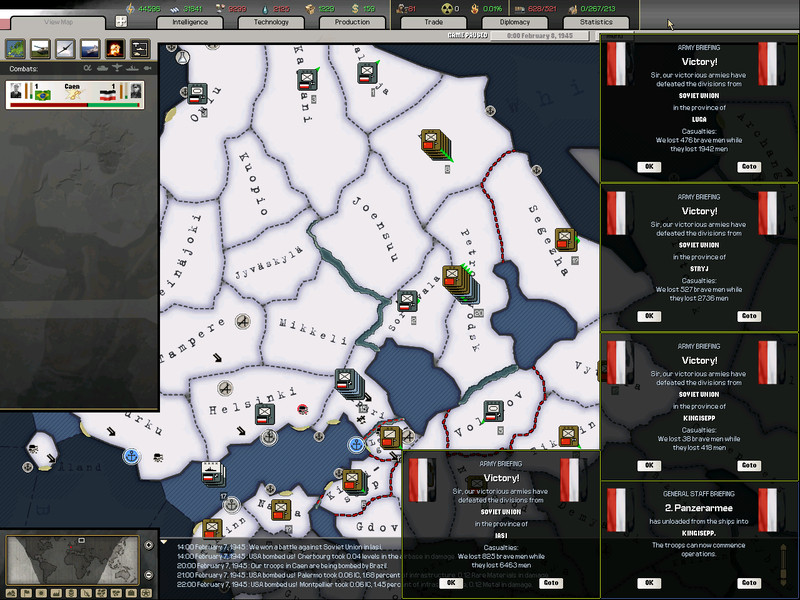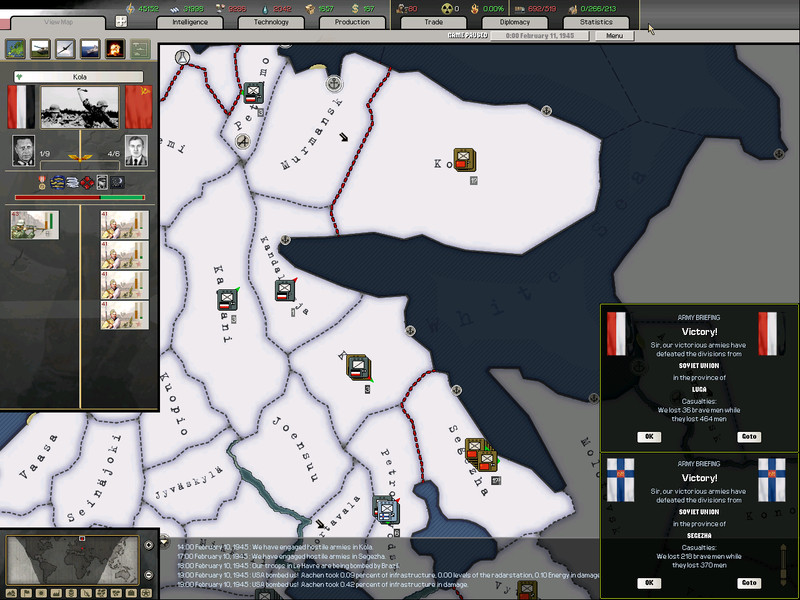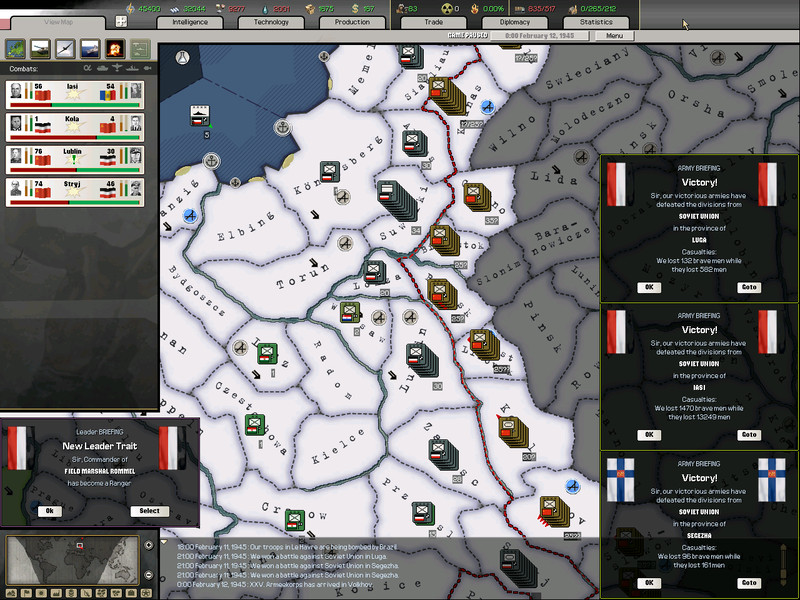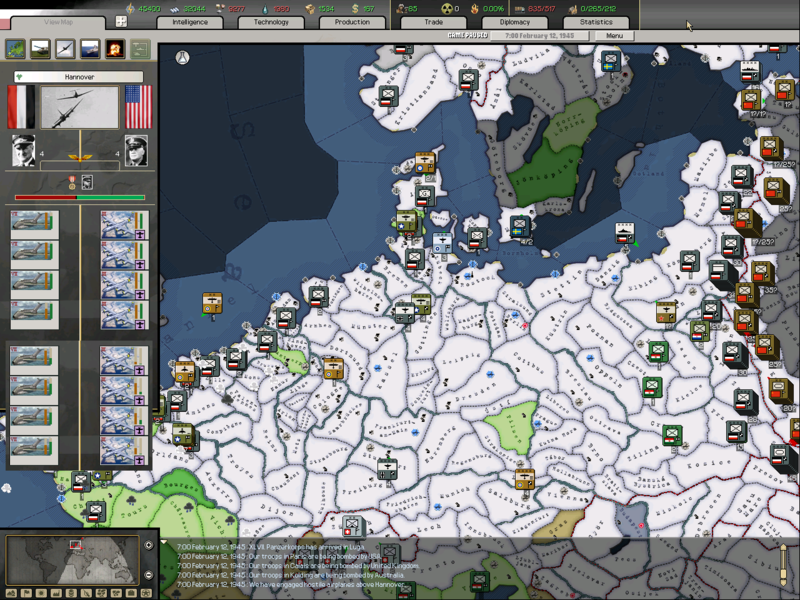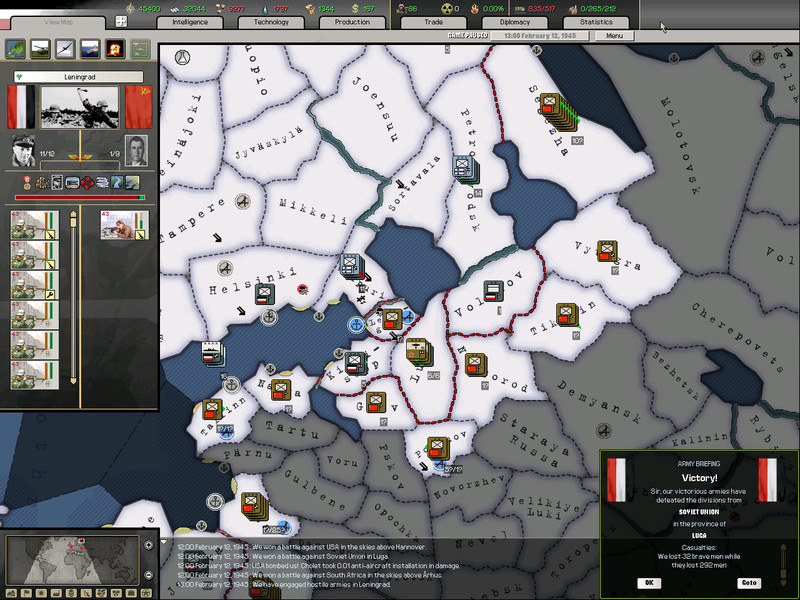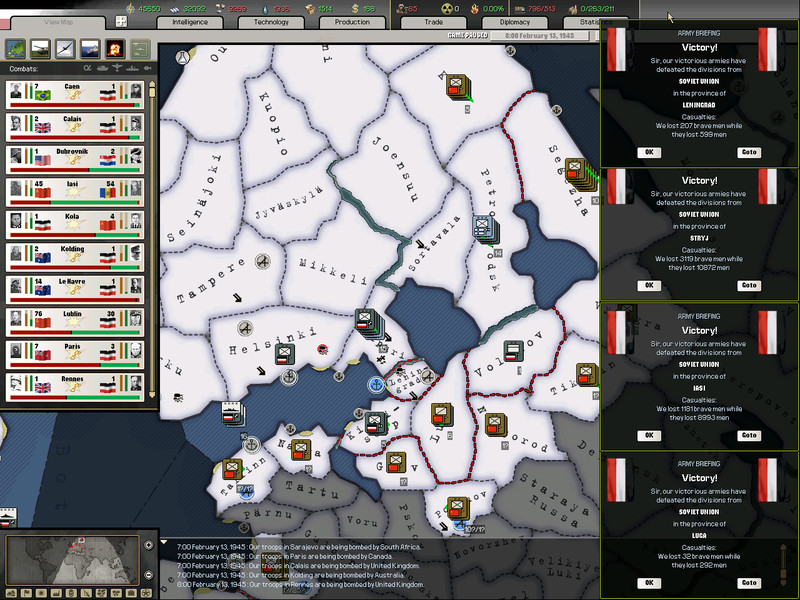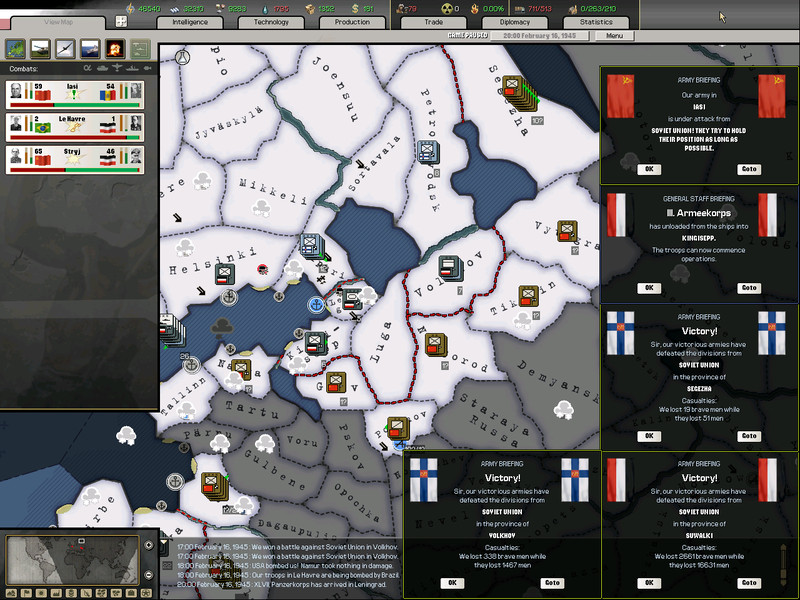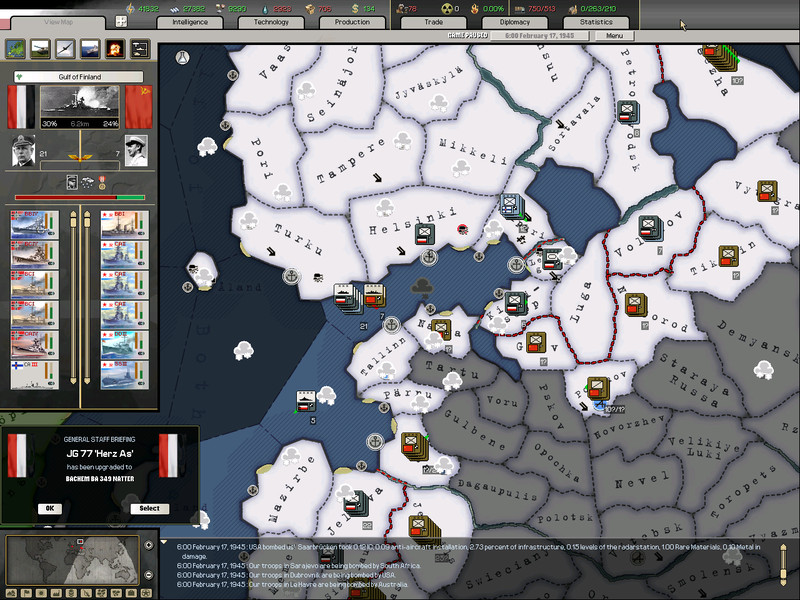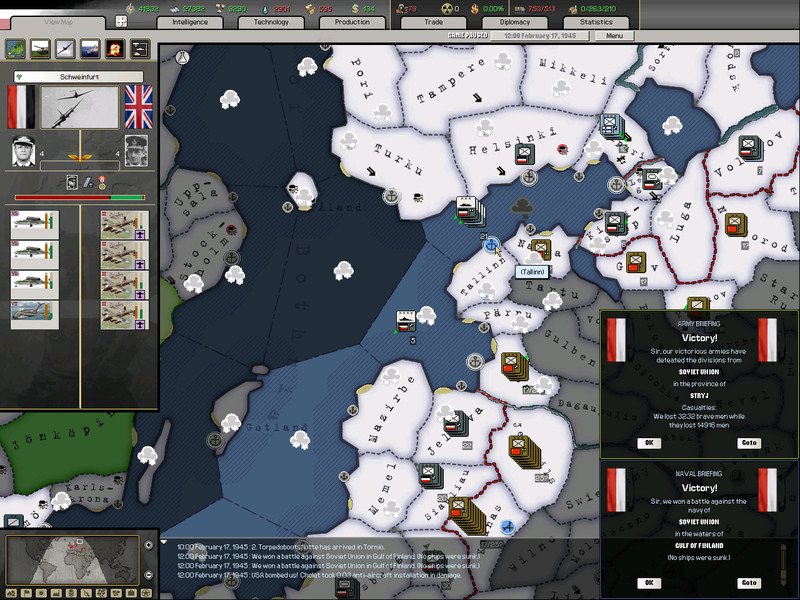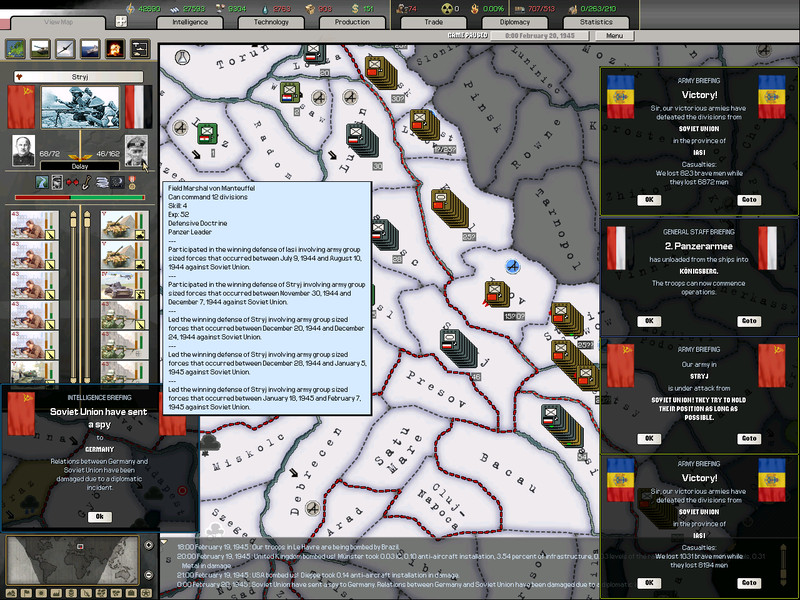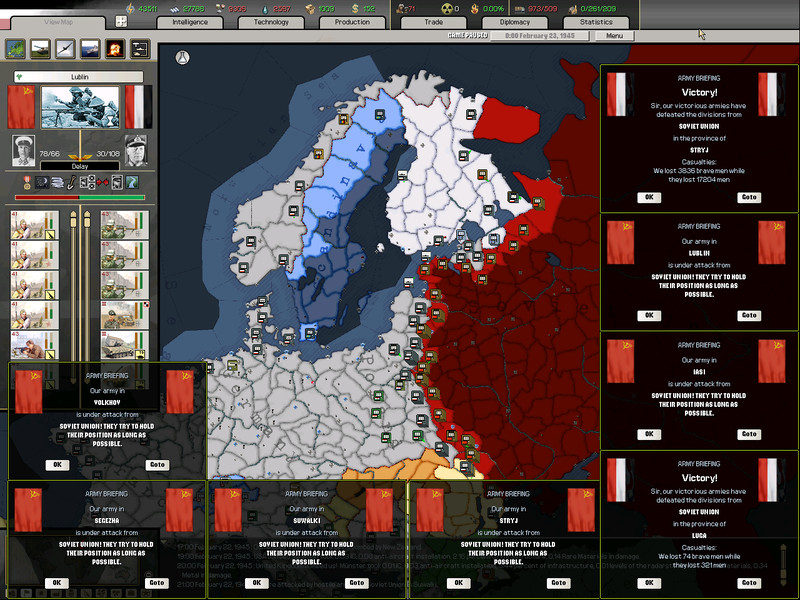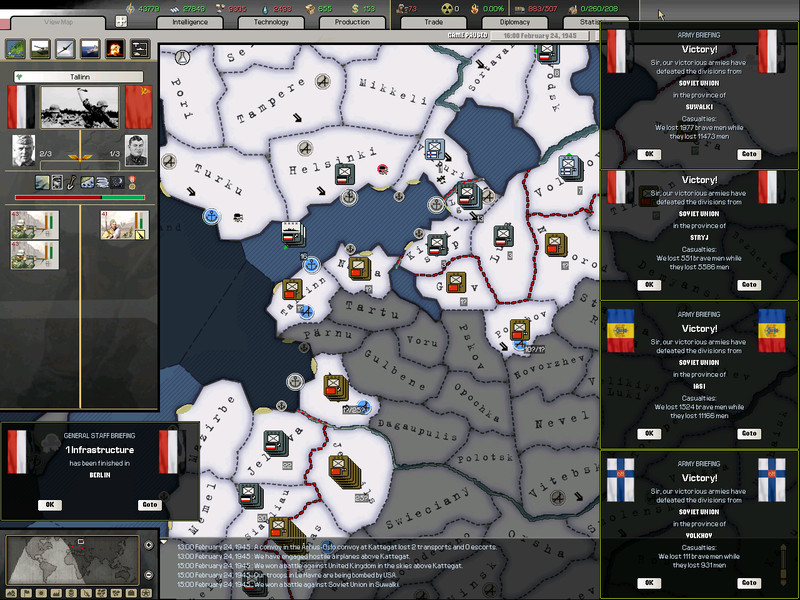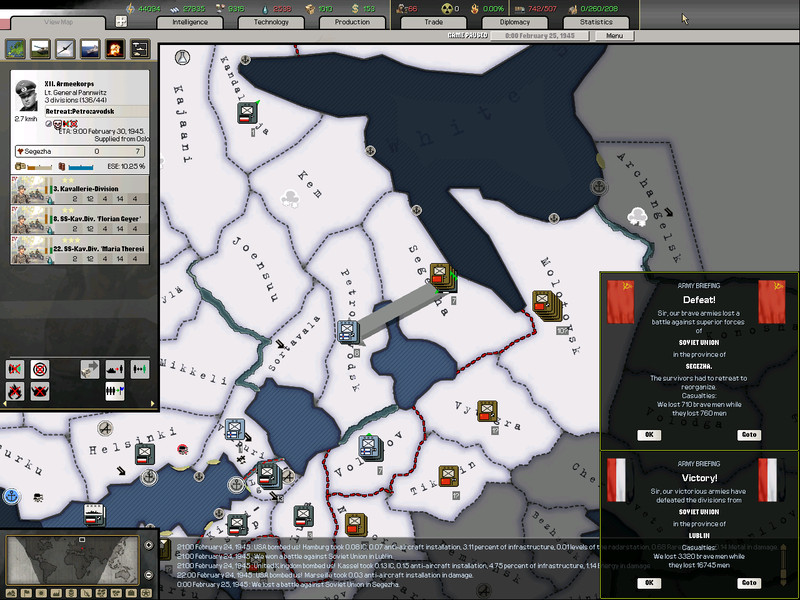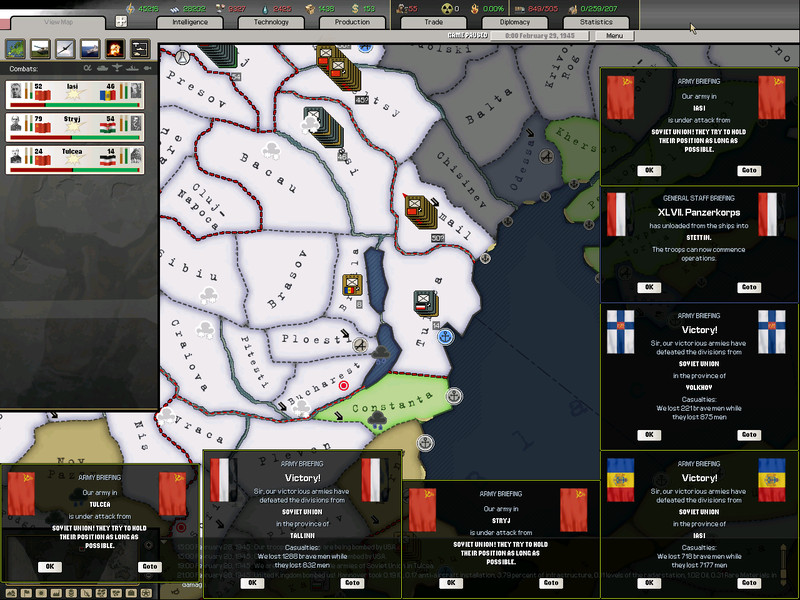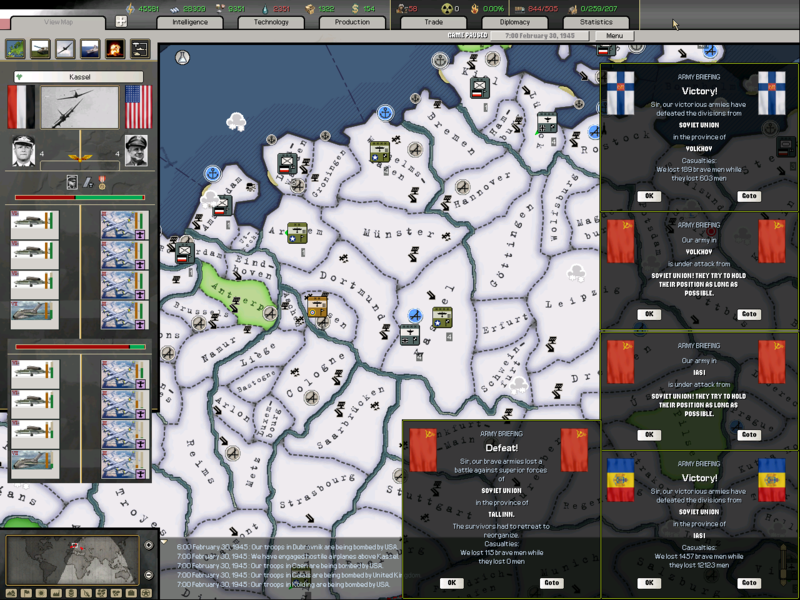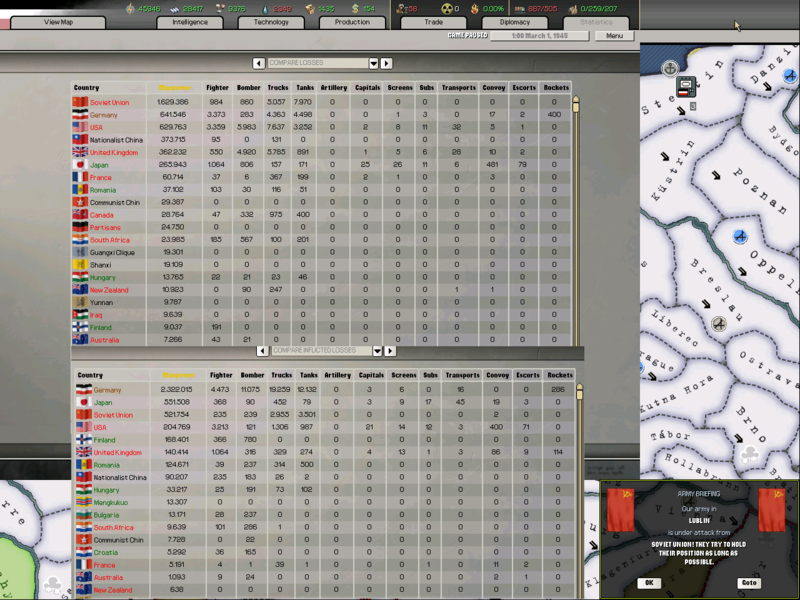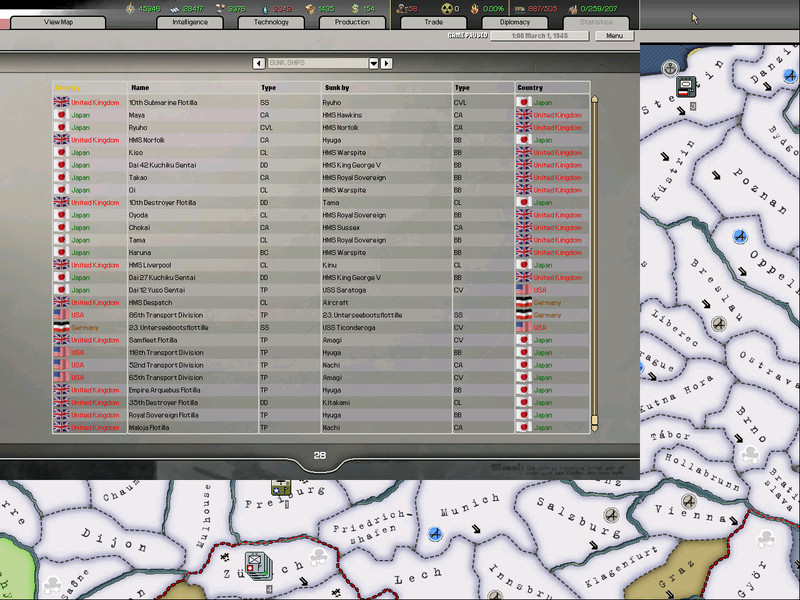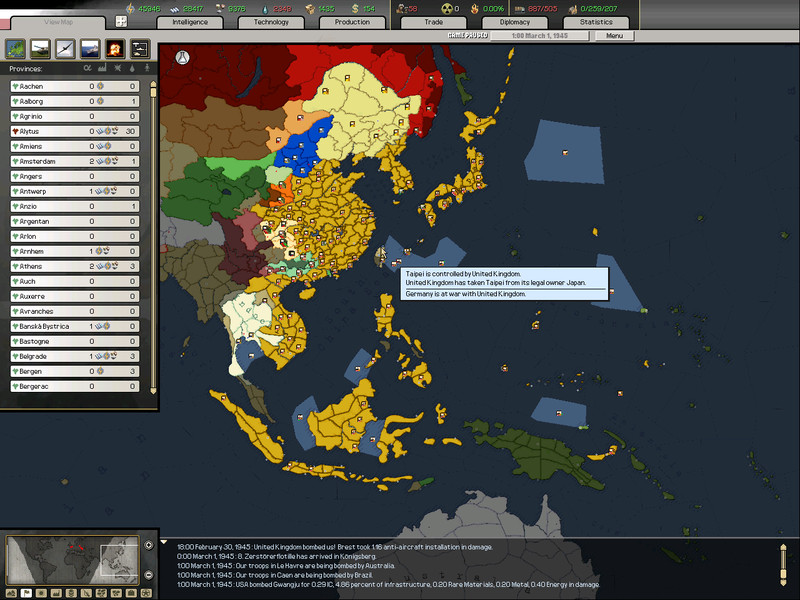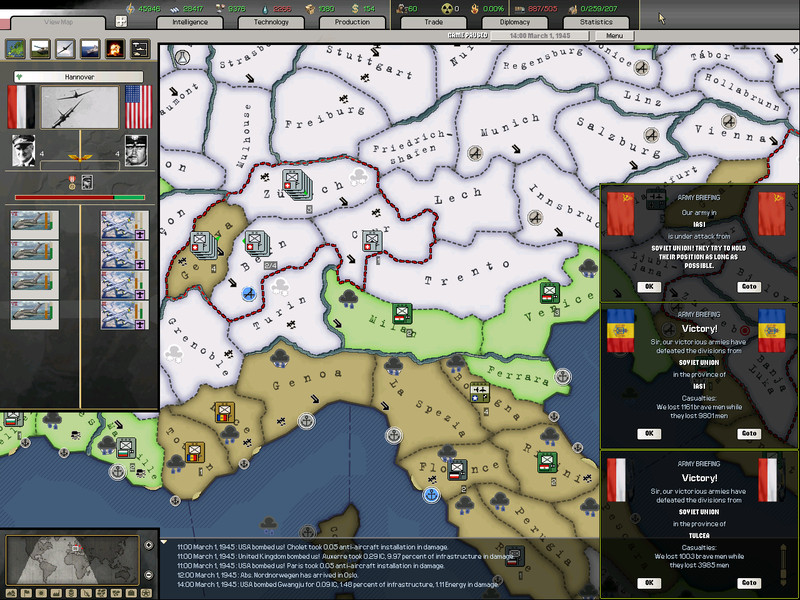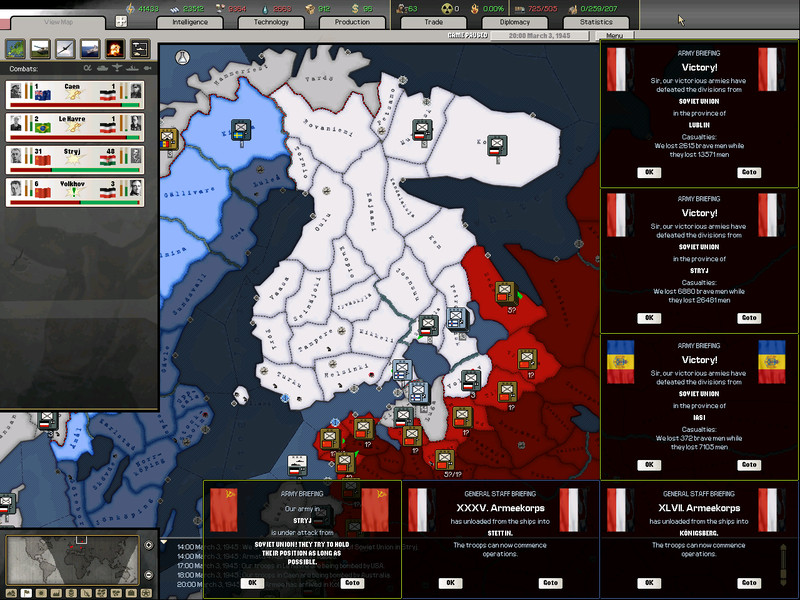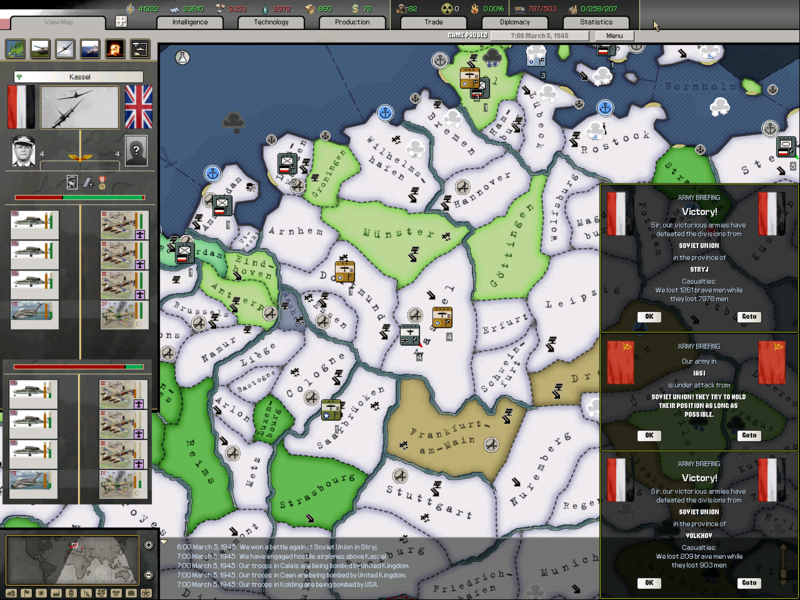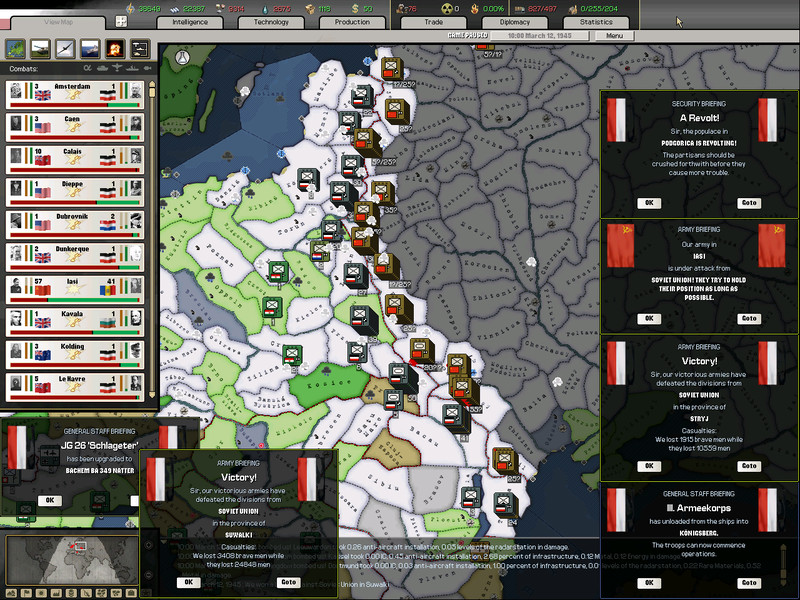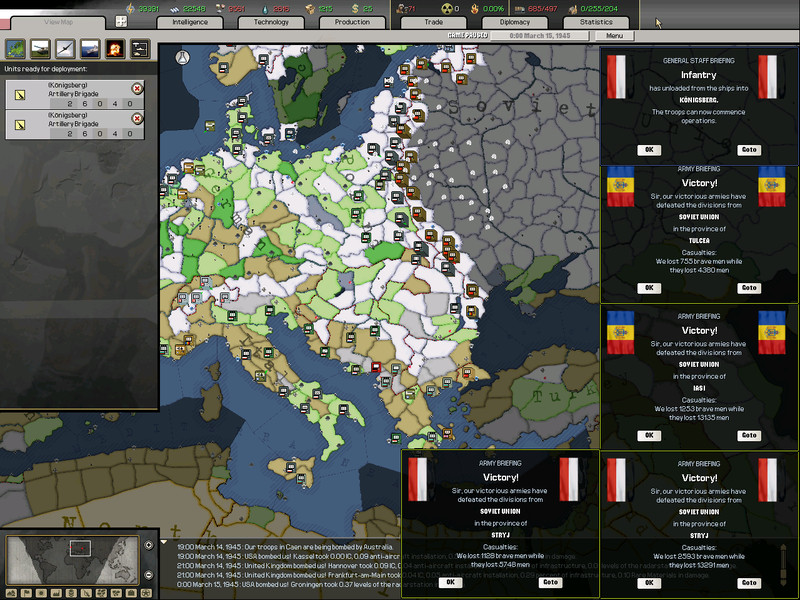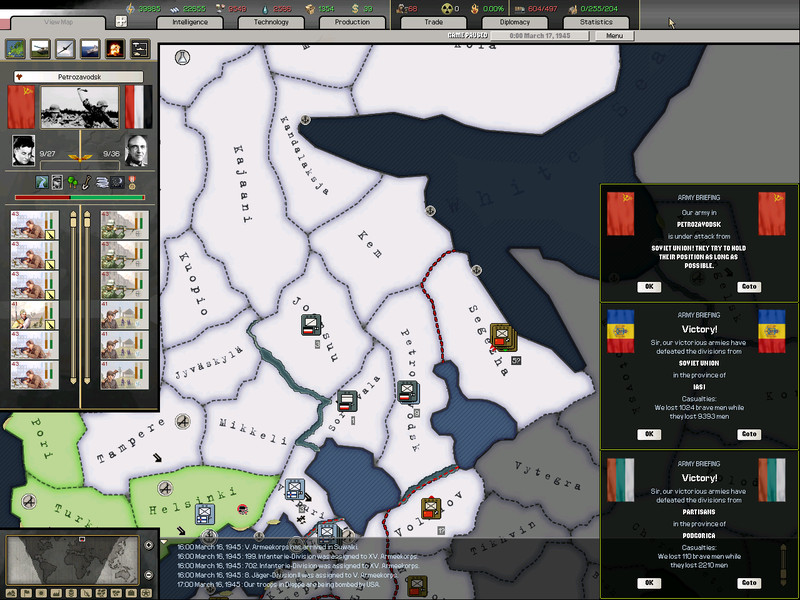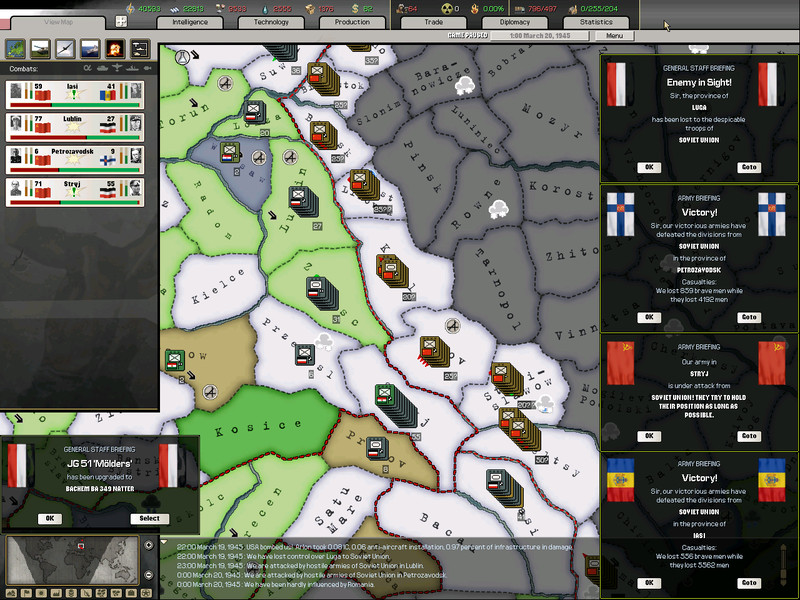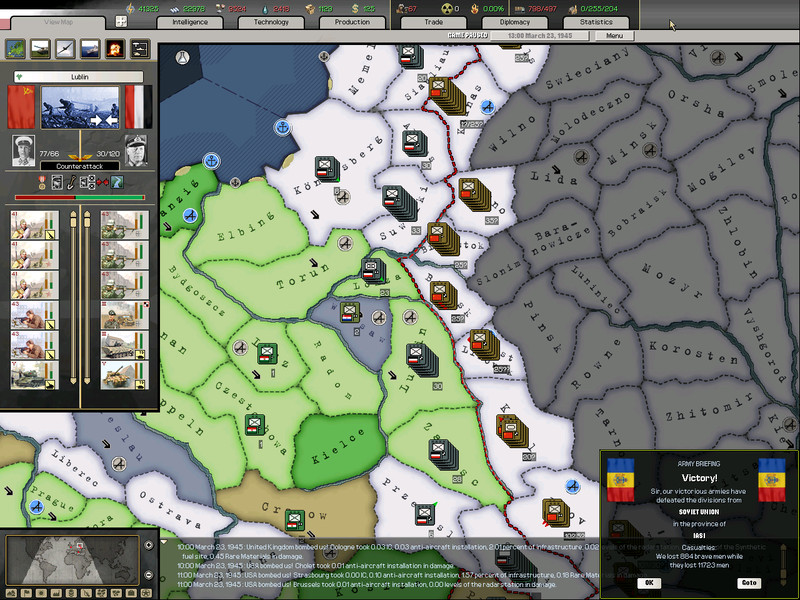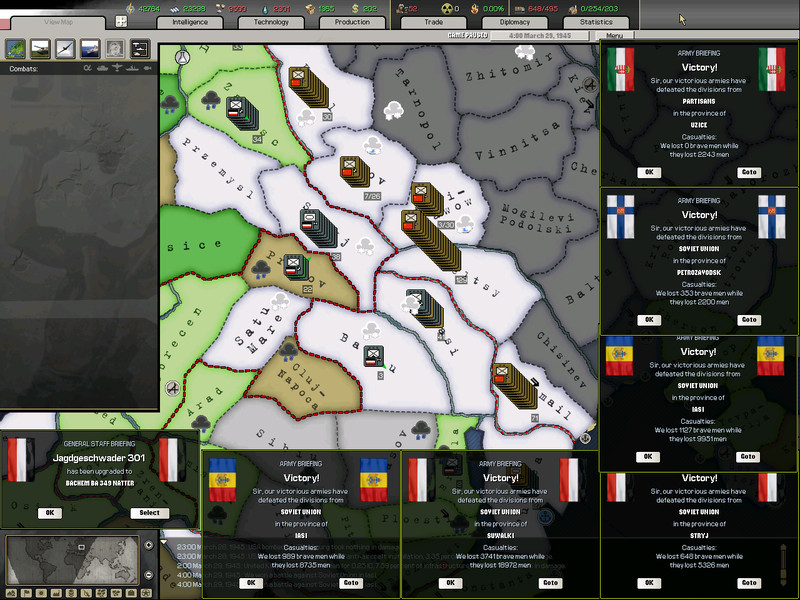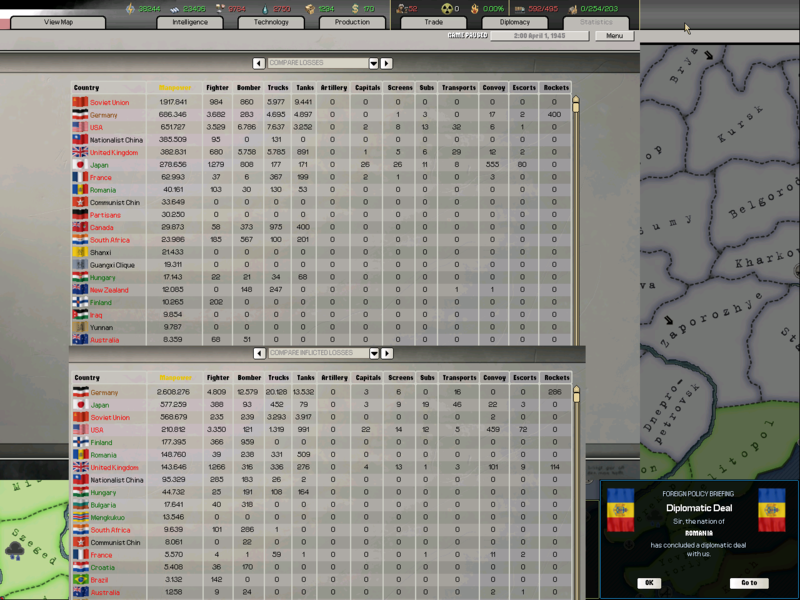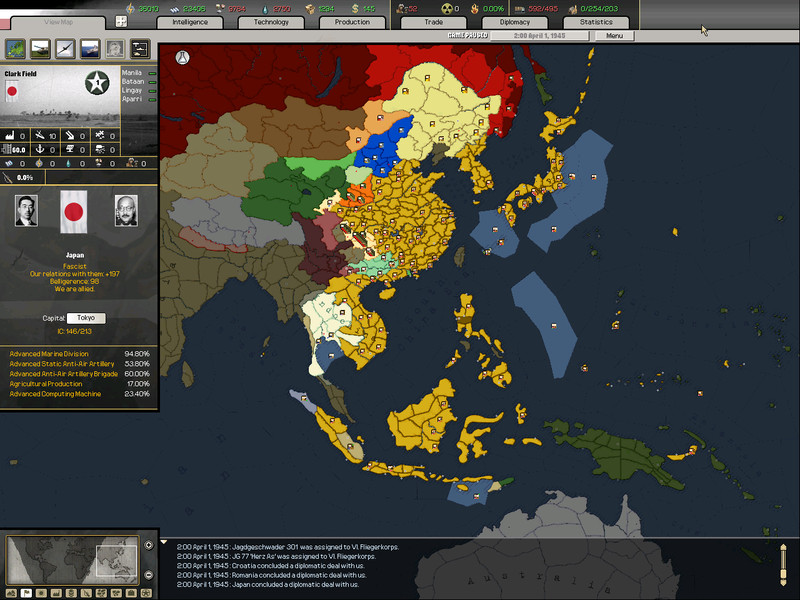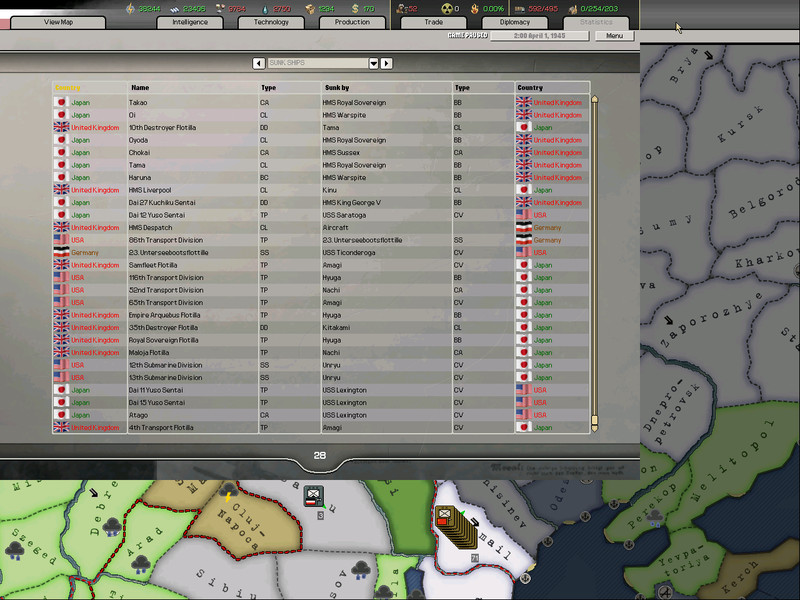November 3, 1944
Research completed today on a version of Turbojet Interceptor, which Air Marshal Milch greeted with great appreciation. He immediately consulted with Chancellor Speer on how best to work in the upgrade schedule with so many other pressing issues.
The Soviets remained restive on the Eastern Front, continuing a series of hard probes of the Heer’s defenses. Thankfully the snows and frozen conditions were settling in along the front, making things more difficult for the Red Army.
With only a third of his divisions at full strength, FM Model nonetheless continued to foil Russian assaults with his innumerable bag of tricks and techniques.
At last STAVKA called off the assault on Iasi, having lost men at a 5 to 1 exchange. Their focus shifted to Lublin, where the autumn weather was still in effect. OKW rushed mobile reserves to the area.
Siam is overrun and surrenders separately to the Allies, leaving the Axis short of a valuable partner in the wider war. Chancellor Speer moves all available production to hasten reinforcements to the front after a series of large scale battles.
The Luftwaffe makes a timely interception of a strategic bomber wing. These wings have inflicted damage beyond measure to the Reich and shooting them down is the only priority for the German air forces.
STAVKA sends fresh waves into Stryj, where the snow is already laced with crimson traces.
The Finnish Air Force continues to thwart allied naval bombers targeting the Baltic Sea. In Konigsberg the last of the troops from Italy arrive, resting briefly while awaiting new orders.
FM von Manstein holds in Stryj, inflicting casualties at a 3 to 1 rate even with the open terrain. Although he hates to give up the dug-in positions, he is forced to shift some Corps into and out of Stryj to keep them fresh.
The Luftwaffe takes delivery of its most modern aircraft yet. Although still a generation behind the turbojets just researched, it is a formidable foe.
Head of Intelligence Hans Oster is disgusted by the latest report. The sparse counterintelligence staff finally uncovered and eliminated an enemy spy, from Japan of all places!
In more welcome news a full wing of Natter interceptors was nearly complete and was readying for deployment to Kessel. Hopefully they could begin to stem the tide of bombers flowing over the Reich. On the ground, Model was called into action yet again in Iasi.
More of the American strategic bombers were leveling the facilities in Hannover until German fighters battered them from the skies.
FM von Kleist is called upon once again in Lublin, as a pair of Yugoslav provinces erupt in violence again. Even with national dissent dropping daily, this area is rife with unrest. Security troops swiftly close in on the uprisings.
As November wanes, the High Command meets and decides to continue with the gambit in Lapland. The first to arrive with be the mountain troops, bolstering the lines as they move into their jump-off positions.
The Red Army seemed to be evacuating the area over time. Field Marshal von Bock wonders how they will react to the reinforcements beginning to arrive.
The partisans are put down with authority in the Balkans. Meanwhile the Luftwaffe takes another step in modernization.
FM von Kleist punishes his tormenters, inflicting four times the butcher’s bill on the Red Army opposite his lines.
Unseen in this report, the four Natter squadrons are ambushed over Stuttgart and savaged, losing one full squadron in the melee. It is the first squadron lost by the Luftwaffe and it is a bitter pill to Milch to see his most potent weapon defanged.
The cabinet meeting is subdued. All participants are weary of the unrelenting struggle. Herr Oster presents his reports with little fanfare.
“Here is a recap of our forces. As noted, we have lost one squadron of interceptors. In time we can make this up by levying our allies’ air formations, but Chancellor Speer tells me that we are not able to make this step at present.
The Heer continues to contract, on paper. The policy of disbanding divisions to swell the ranks of other formations continues, which is a small force multiplier on the battlefield.”
“Siam is no longer listed on these reports with her capitulation to the Allies. Japan is holding their territory in general, but we know that their navy is a shell of its one time glory.”
“The Wehrmacht continues to perform efficiently, even with our supply and other constraints. Our enemies are bleeding men when we come to grips with them.”
General Jodl continues: “When our forces are ready in December, we will launch Operation Lapland to clear the Scandinavian Peninsula of Soviet forces. All of the Wehrmacht will participate. At this moment the Kriegsmarine is transporting eight mountain divisions, eight infantry divisions, and eight mobile divisions into Finland under Heersgruppe Skandinavien. A wing of tactical bombers and a wing of CAS will deploy there as well, though they remain unescorted and vulnerable.
Our desire is to cut off Red Army forces as far south as possible, in order to eliminate as many as possible, but the snows and the rivers will prevent this action, at least initially. We hope that the Russians will move north to defend Murmansk, but this is not certain. Thus initially we will be moving up the west coast of Finland. We will exploit to the east when this is possible and attempt to make our Kessel in the far north. We do not believe that the Russian Navy has the ability to transport any trapped forces to safety, so this is a chance for us to make a real impact against the Red menace.”
Chancellor Speer concludes the meeting. “Our hopes go with FM von Bock in the north and we will give him all the support possible. Good hunting!”



